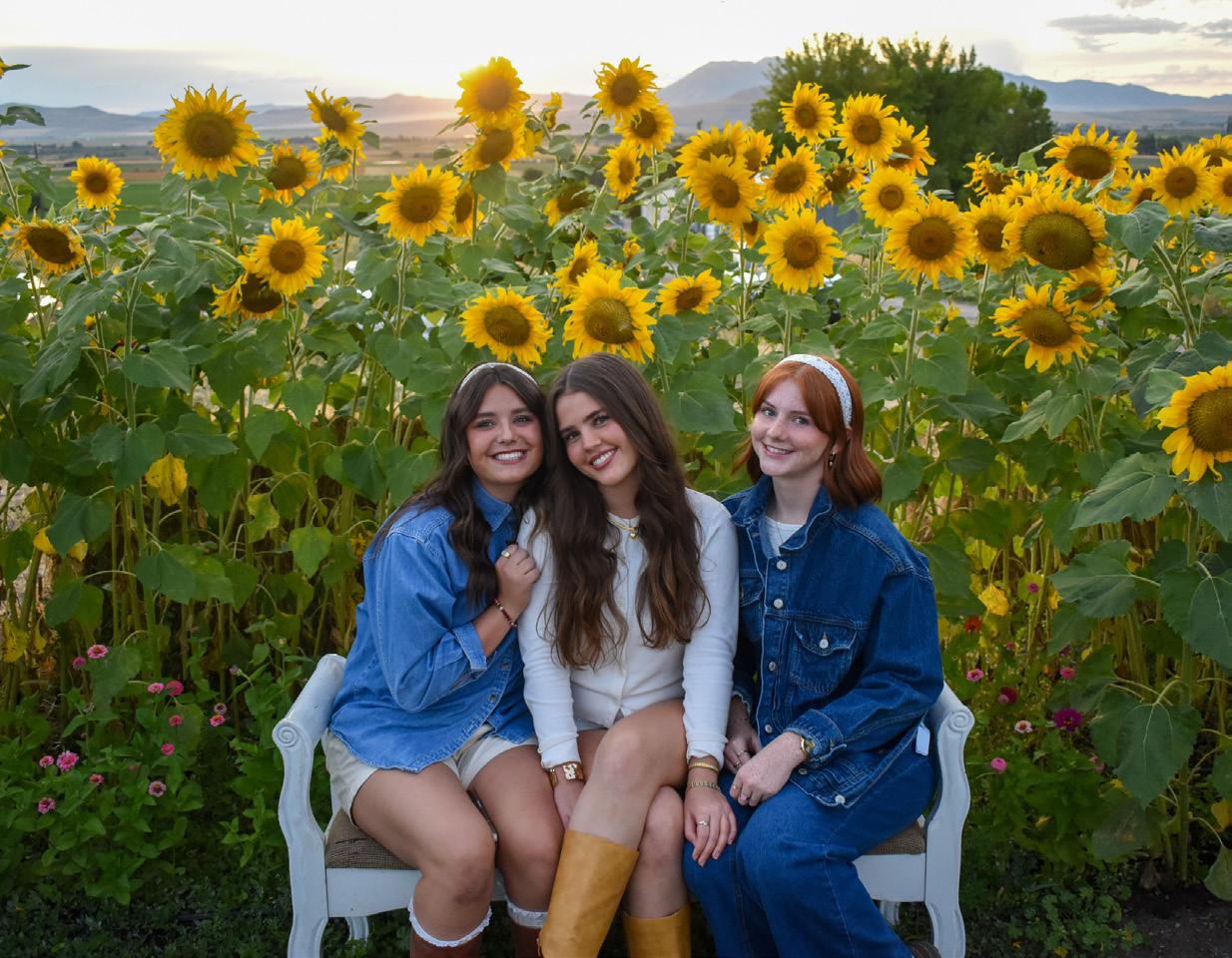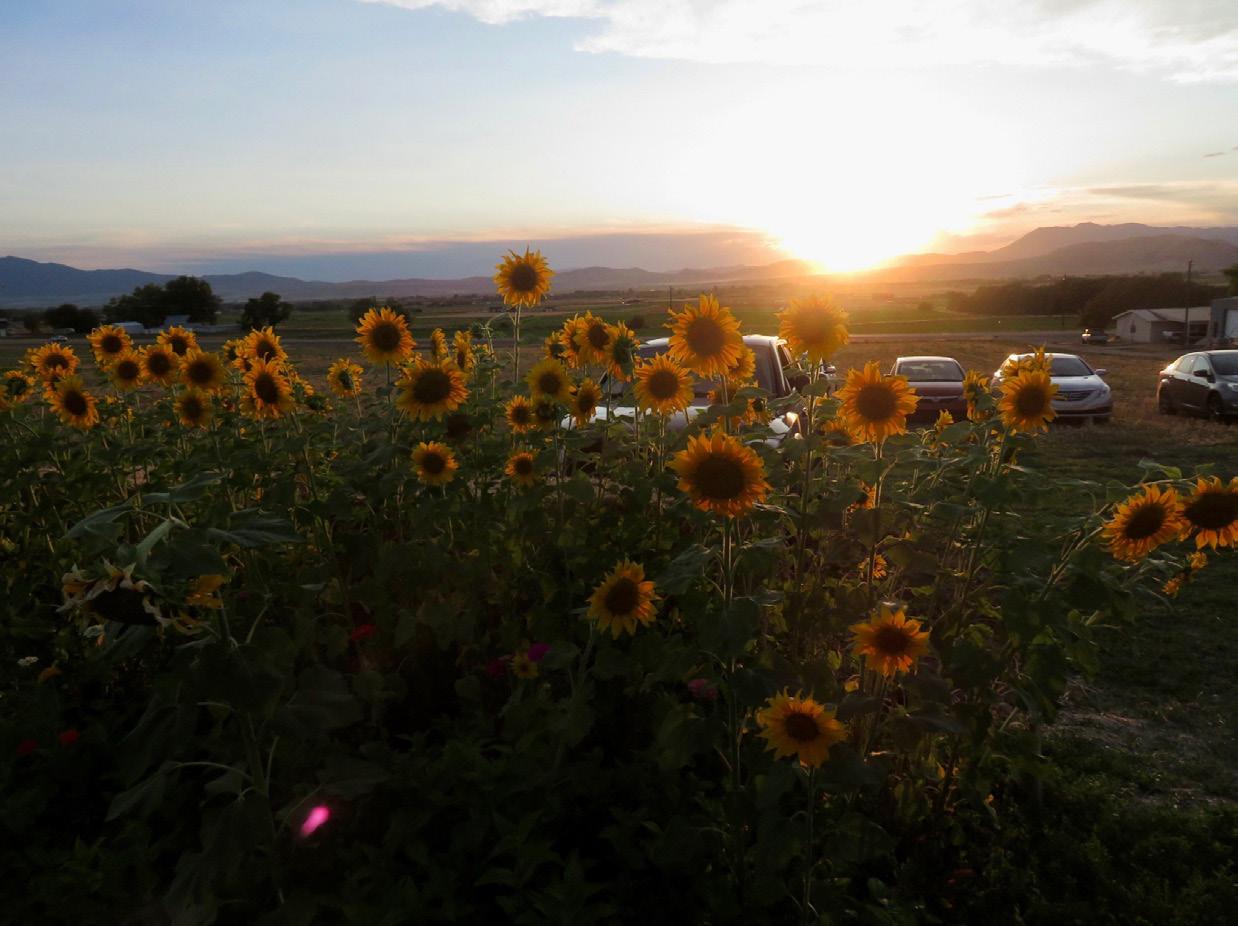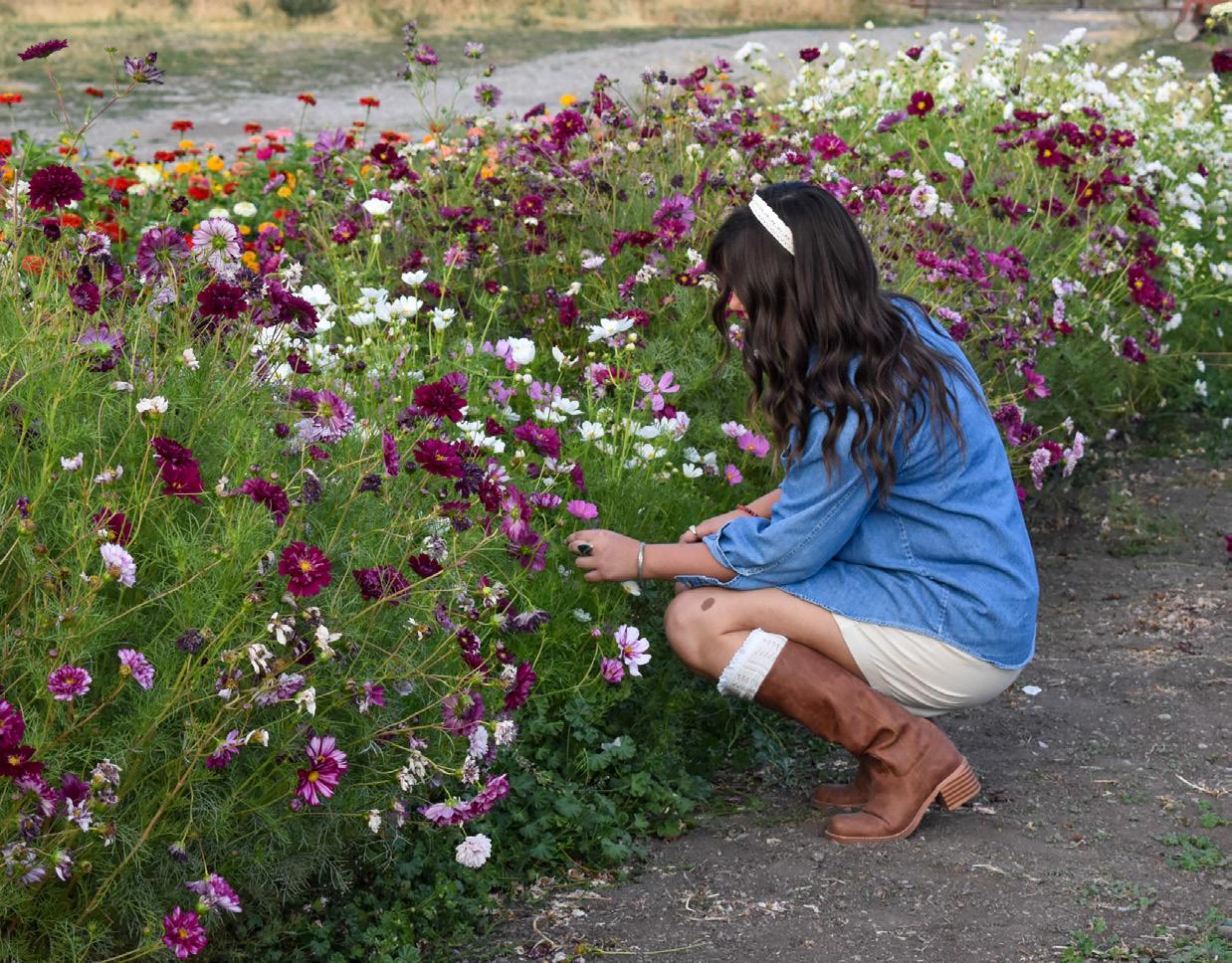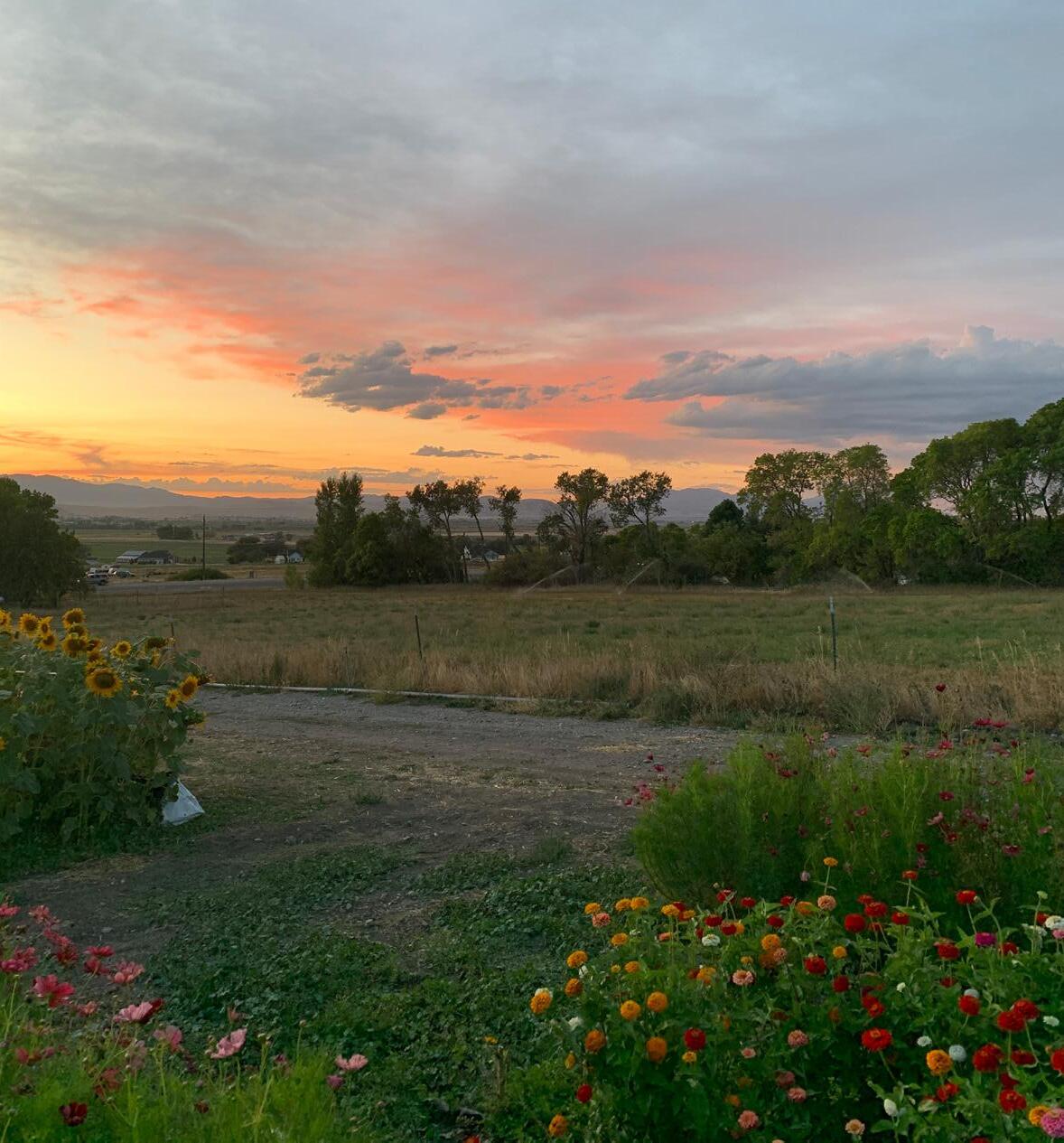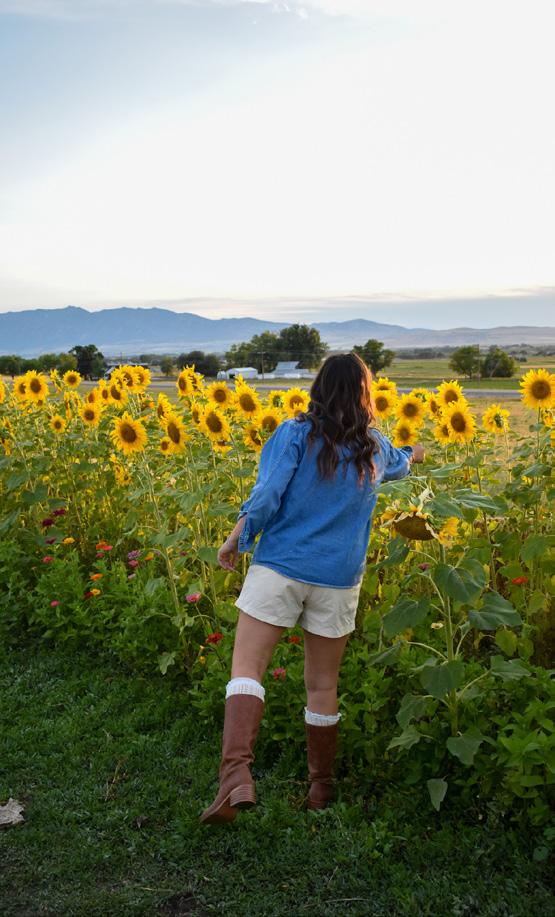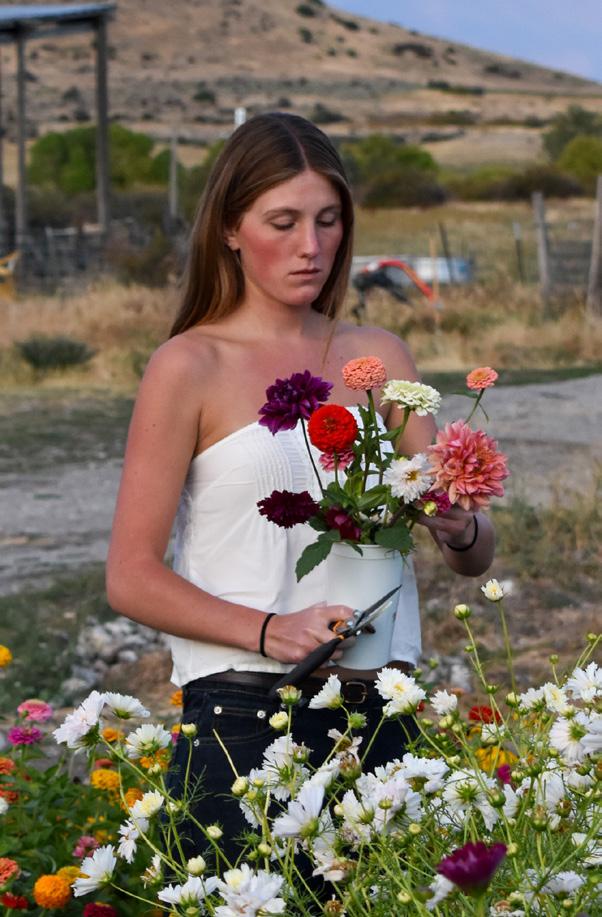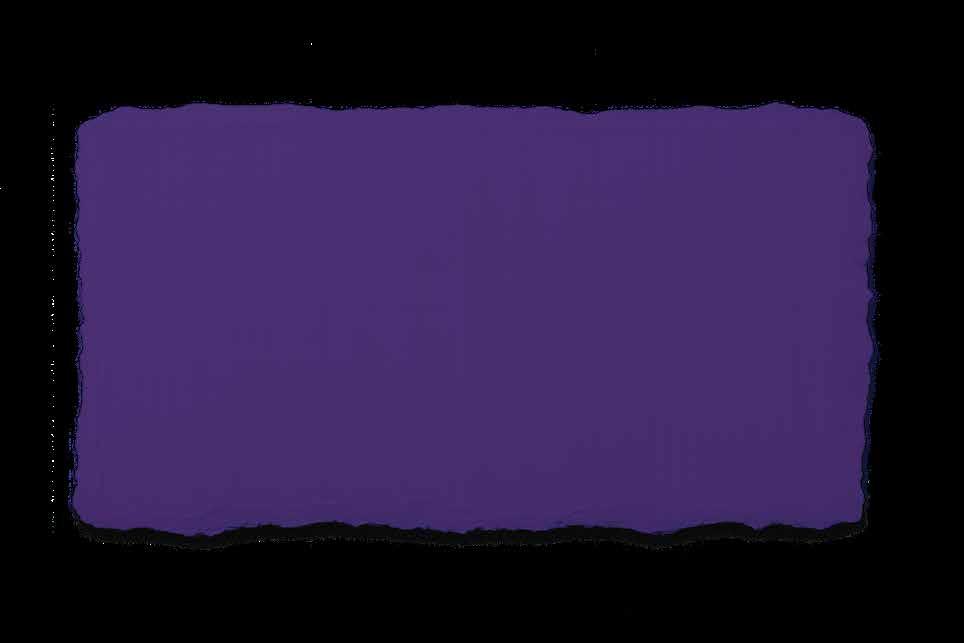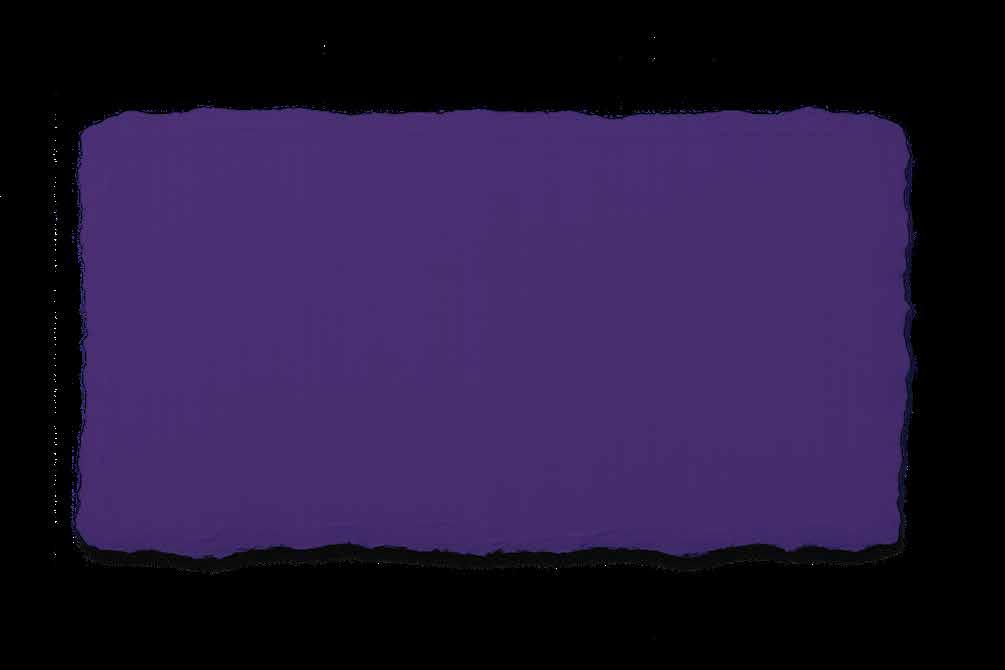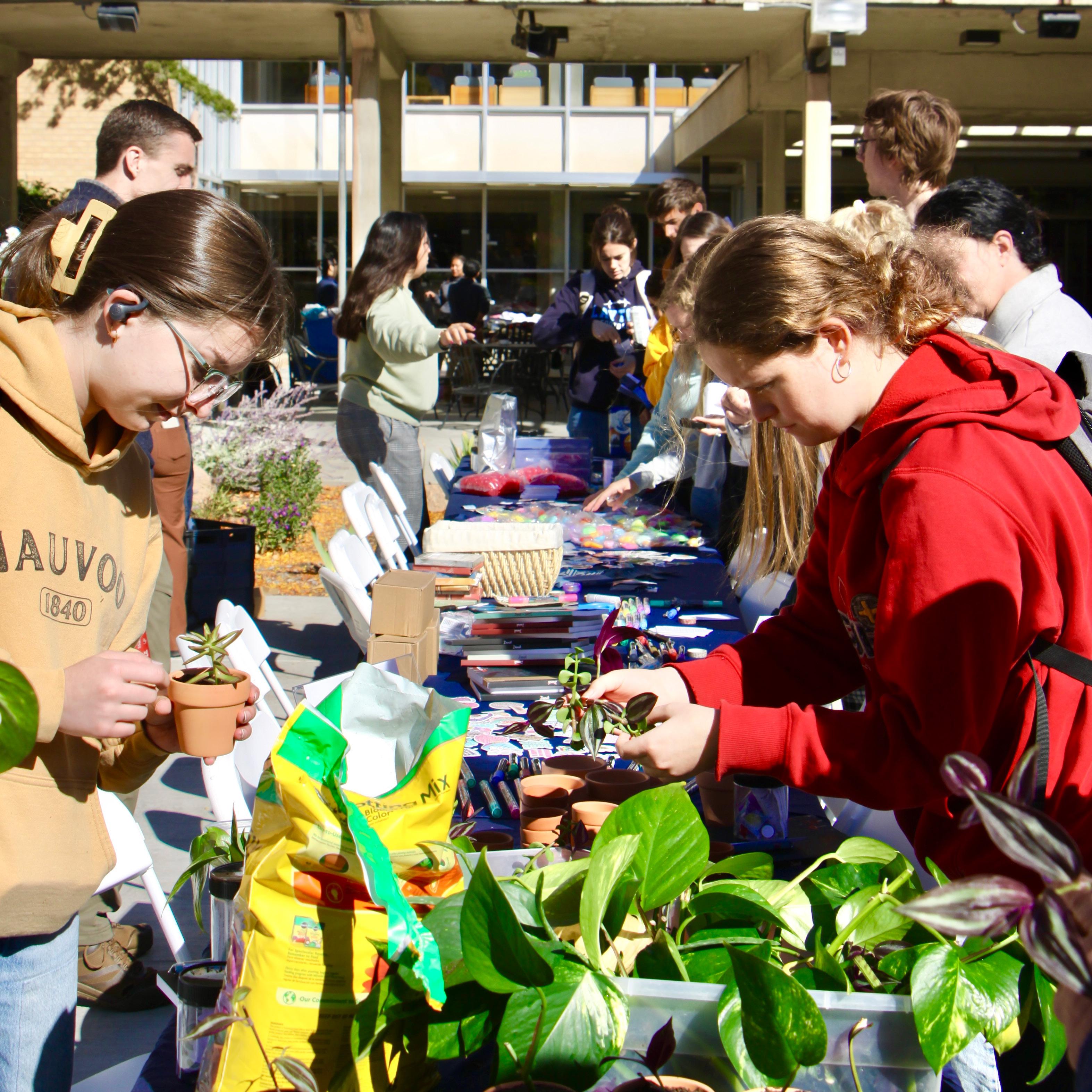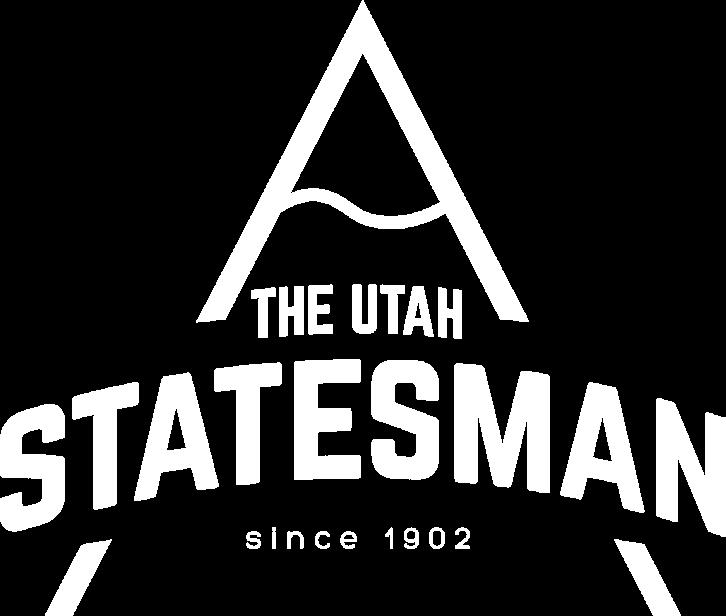




By Jayke Martin STATESMAN REPORTER
Aggie Radio 92.3 FM, the Utah State University student-run radio station, celebrated World College Radio Day on Oct. 3 with a full day of programming, live music and a special collaboration with USUSA as part of Community Week.
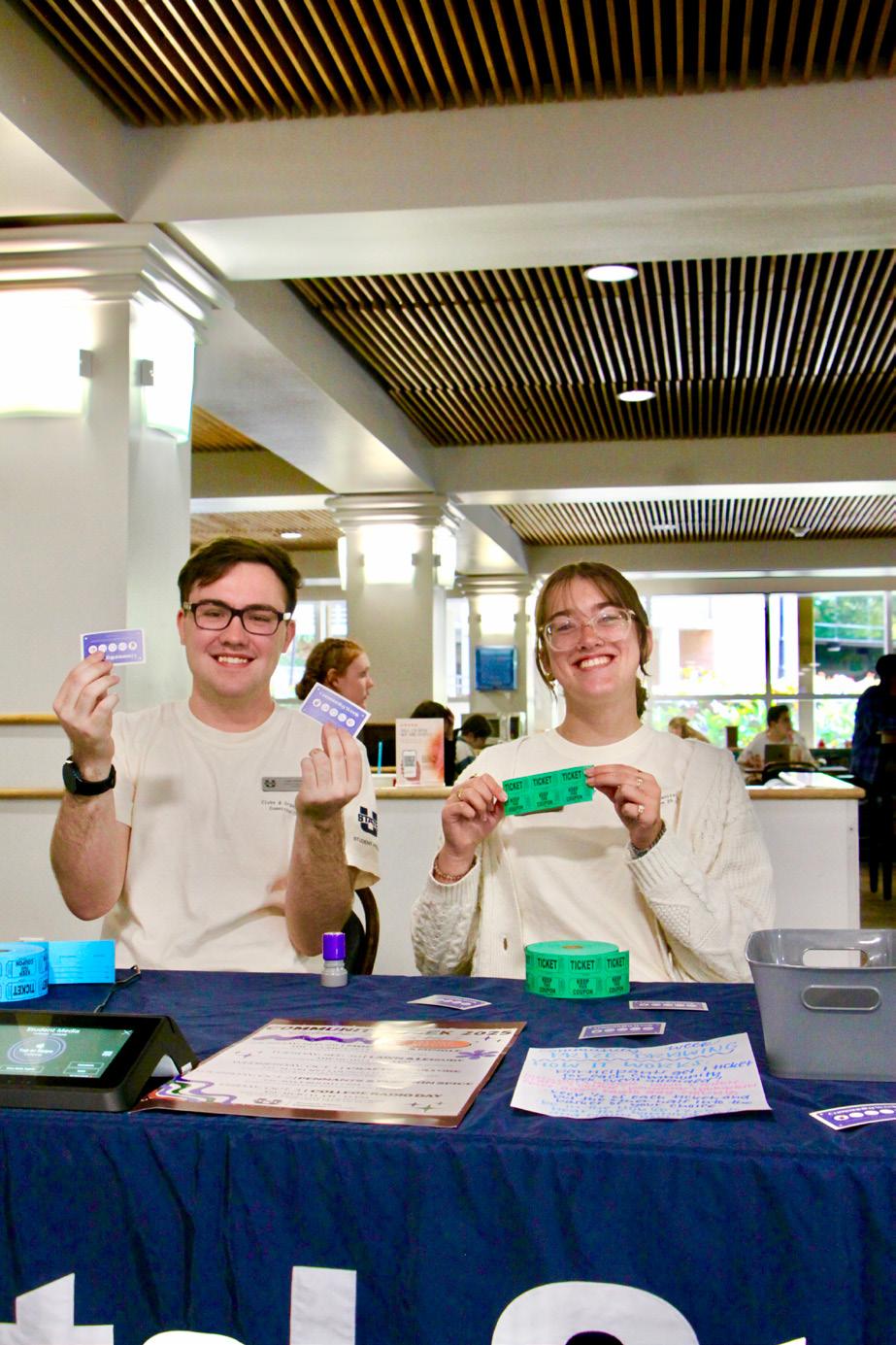
tell their stories and share a little bit more about what they do and why they do it.”
Student organizations from across campus participated in live interviews, including cultural, service and academic clubs. Each group had an opportunity to discuss its purpose, upcoming events and how students can get involved.
At the event, organizers held a raffle for students who attended the week’s activities, giving out prizes as part of the event. But beyond the prizes and performances, students said the event showed off the creativity of other students.
“All the people I know at Aggie Radio are great and have phenomenal music taste,” Budge said. “One of the benefits of Aggie Radio is that they’re able to speak out about things that maybe aren’t as permitted in other spaces.”
For Bean, that sense of community is exactly what the week was meant to highlight. She said the partnership between Aggie Radio and USUSA worked well because both groups share a similar message.
Jillian Peterson, a host of the Aggie Radio show
“Two Blonde Chicks,” attended the event.
“I love having a radio show because it makes me feel like I have a voice on campus,” Peterson said.
“Throughout the week, I plan out which songs to share on the show, as well as the things I want to talk about. “It’s honestly a creative outlet for me.”
For organizers, that creativity and self-expression is exactly what they aimed to highlight. The event not only showcased Aggie Radio’s student voices but also reflected the broader sense of community and individuality USUSA hoped to promote during Community Week, according to Bean.
College Radio Day is an international event that recognizes student-run radio stations. Aggie Radio marked the day by hosting hourly live interviews with student organizations and curated DJ sets.
“I think radio is a really good way to discover new music and to support students and artists,” said Katelin Budge, a student participant. “It’s a fun way to listen — less intentional than clicking on a song but more intentional than just shuffling a playlist.”
This event gave students a chance to experience college radio in person and connect with clubs across campus.
“Since it fell on Community Week, they reached out to me and wanted to do a collaboration by inviting some of our clubs under USUSA to do live interviews,” said Mia Bean, USUSA clubs and organizations executive director. “We wanted to get clubs who were ready to
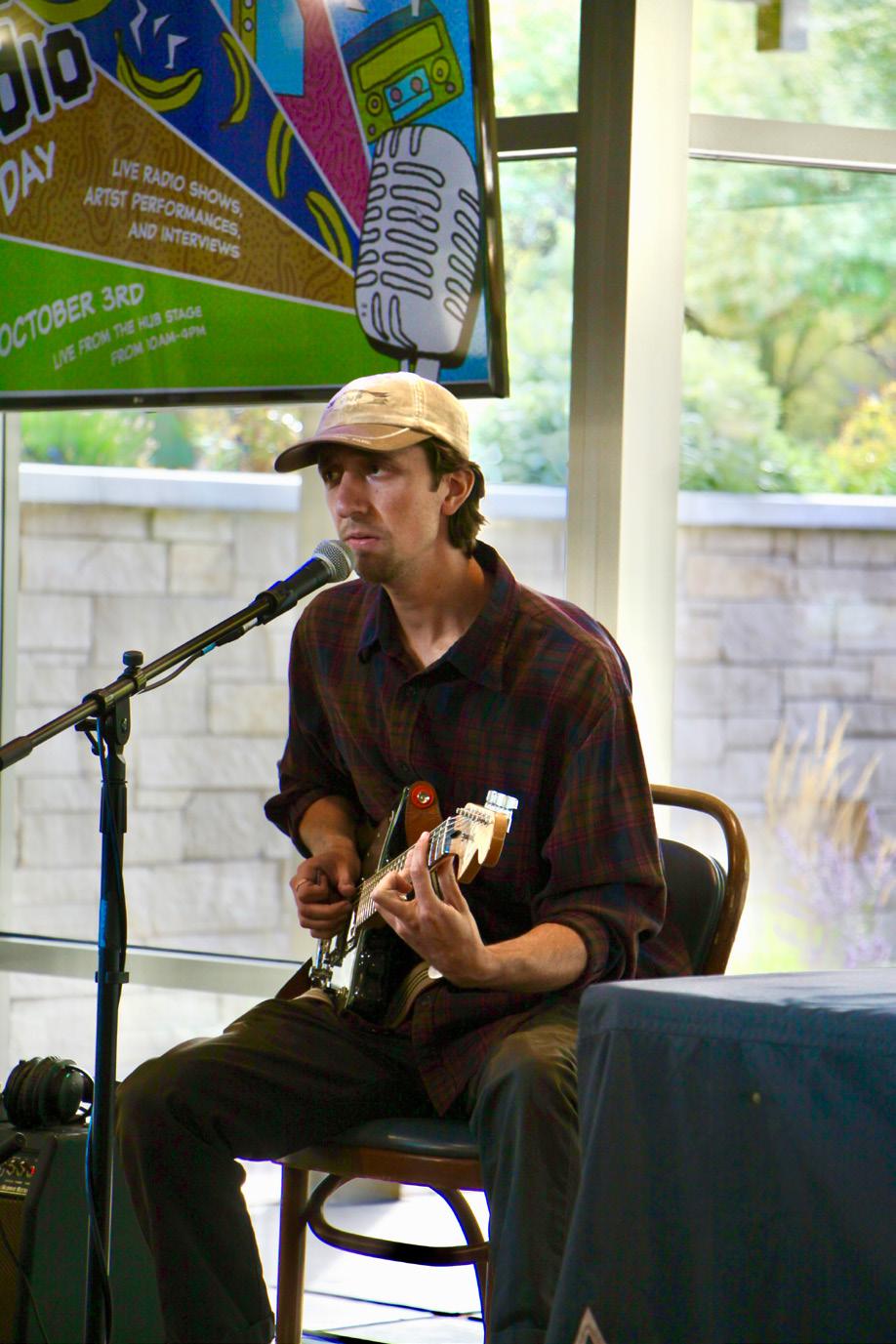
“Their message really aligned with what we were trying to do this week,” Bean said. “I just really want to emphasize for Community Week the value of community as well as individuality and becoming part of the Aggie family.”
I love having a radio show because it makes me feel like I have a voice on campus.
— Jillian Peterson
“I feel like there have been a lot of changes not just at Utah State but within higher education in general,” Bean said. “So, I wanted to showcase their uniqueness and show that this is a place where everyone can belong — encouraging students to speak up, be themselves, be unique and share their stories.

Jayke Martin is a junior studying journalism with a minor in theater. She loves reading and meeting new people.
— jayke.martin@usu.edu
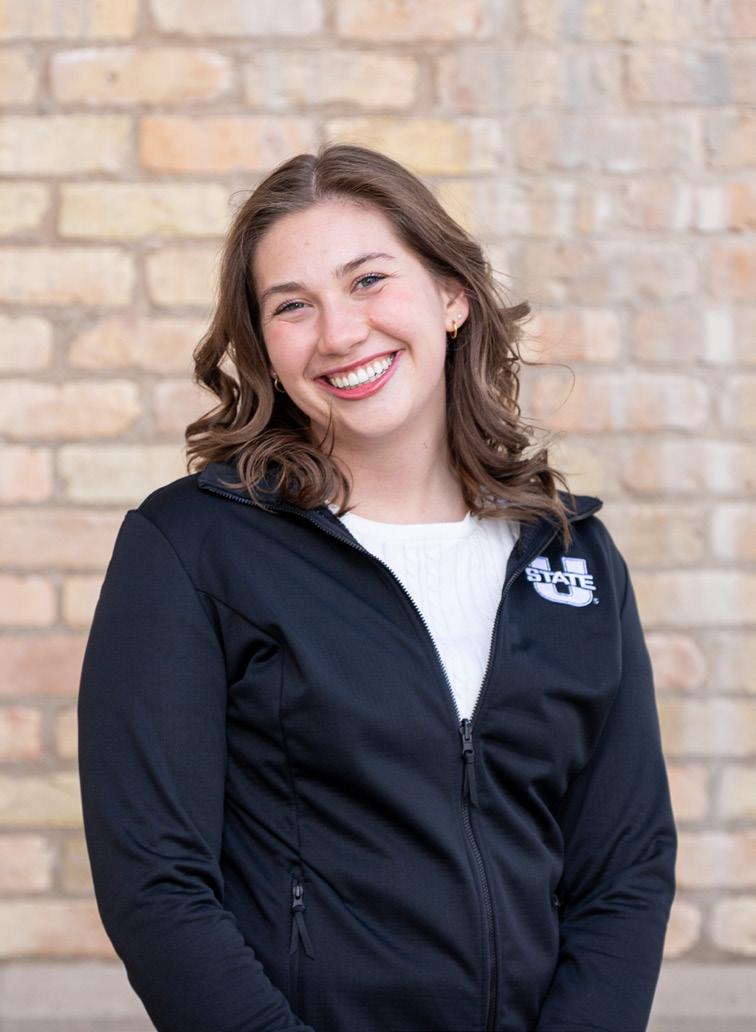
Oct. 12–18 will be Utah State University’s Homecoming Week. As directors of the USU Student Events Office, we are overplanning events for the study body, and the traditions director Creed Jones is directly over this week's events. With the help of the Traditions Committee, the homecoming theme has been selected as "Forever an Aggie," emphasizing the tightknit community and network of USU alumni and students. Throughout the week, various organizations have programmed various activities and events for students, alumni and community members. Our office leads the week with three iconic traditions. On Oct. 13, the organization will host 65 clubs and organizations for the Homecoming Street Painting. Each group will design and paint a square on the TSC Bus Loop from 4:30–7 p.m. Later this week, on Oct. 16, the Mr. USU Pageant will occur in the Daines Concert Hall. Ten USU students, representing a diverse range of titles, will perform a group dance, individual talent and the questionnaire section. The following day, the winner of the event will walk the homecoming field with Miss USU 2025. After the football game on Oct. 17, there will be one last homecoming celebration: The Homecoming Throwback Dance. Located in the George Nelson Fieldhouse immediately after the football game, students will dance throughout the decades. From the '60s to
today’s top hits, we are reminded the Aggie family and legacy are forever. It is so important to us that USU students are able to find connection and belonging during their time at Utah State, and we believe our events are a great opportunity for them to do that! College can be an isolating and uncomfortable time in life. Students today are dealt a unique hand of cards. However, student events can provide an outlet and community for students. Events like Homecoming Week on campus can provide students with a break between their busy schedules and an opportunity to form lifelong memories. As traditions continue during the week, students are reminded of who came before them and who will follow. These yearly rituals highlight the role of tradition, especially on college campuses. However, as society continues to progress, notions of tradition are changed and challenged. We value creating a climate where new ideas are accepted and traditions are valued, finding a balance between the past and the future.
— studentevents.ususa@usu.edu
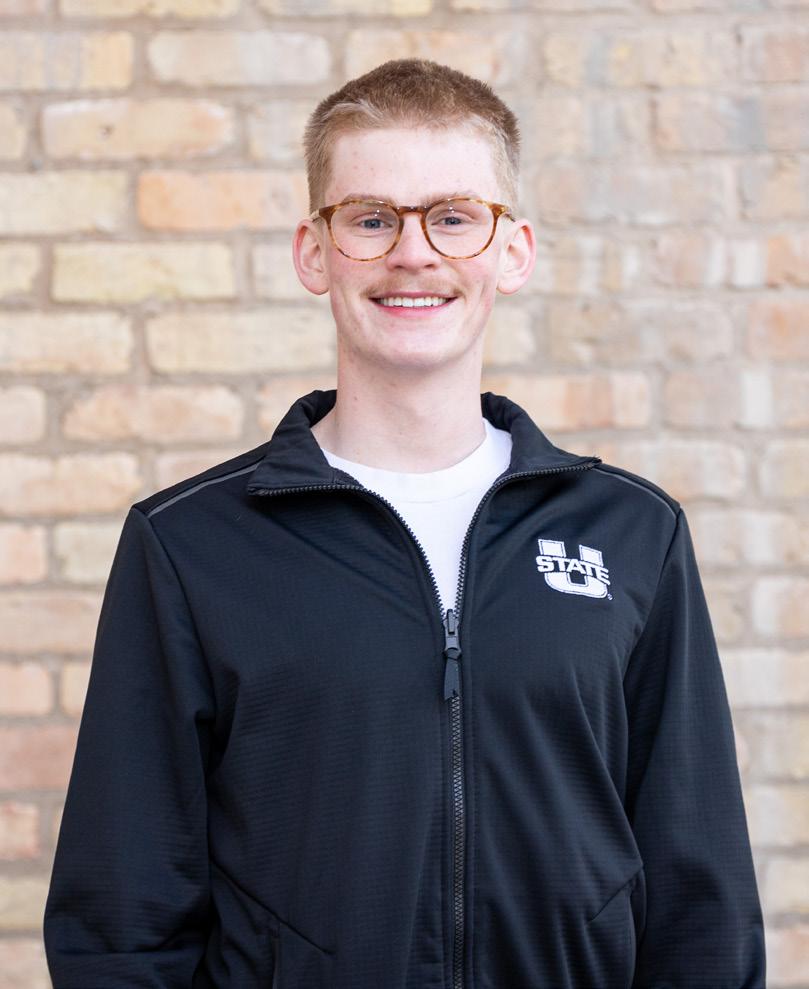

By Kenadie Jackson STATESMAN REPORTER
An amendment to create an “University Studies” senator to represent the current 10% of students with an undeclared major was proposed this past week to the USUSA.
Within the preamble of the constitution, it explains its purpose as supporting Utah State University students through “academic representation, uplifting activities, and ensuring a voice.”
“This clearly states that for the betterment of each student, the USUSA must provide academic representation. However, University Studies students are not in an official college, and while they pay tuition, go to class, and are academically involved the same as everyone else, but they have zero academic representation or say,” Colin Hastings, student advocate vice president, wrote in a message to The Utah Statesman. Hastings is the primary sponsor, author and originator of the bill.
While this proposal was a new senator position, there would have been no changes to student fees.
“We are losing three senators, so we can use the money we save to give [the new senator] equal scholarship and budget,” said Max Alder, Executive Vice President and chair of the Academic Senate.
Because of the college merger, five senators have
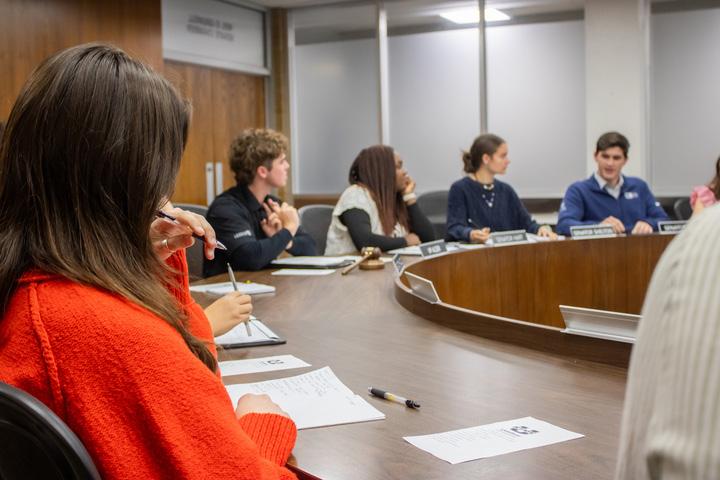
merged into two new colleges. There are three senators now working together with the College of Arts and Sciences and two senators working together for the S.J. and Jessie E. Quinney College of Agriculture and Natural Resources. They were elected before the merger so now they are grouped together for the year.
“We didn’t want to release any of them or force any of them out. We decided to keep them on in honor of what they were elected for,” Alder said. “Those three senators have to meet with one dean altogether, and their councils have essentially combined into one big
council. I’ve been really impressed with how they’ve adapted and made the best of it.”
After this year, each college will only have one senator, which means there is leftover funds from the budgets and scholarships of the three lost positions that need to be allocated for the next year.
Where the funds are being reallocated is still being discussed. Each senator also gets the same budget for their college, regardless of their college size.
With the three senators gone, according to Hastings, the change would be easier to make now.


Kenadie Jackson is majoring in journalism and communications. She is from Draper and loves anything active and outdoors.
— kenadie.jackson@usu.edu
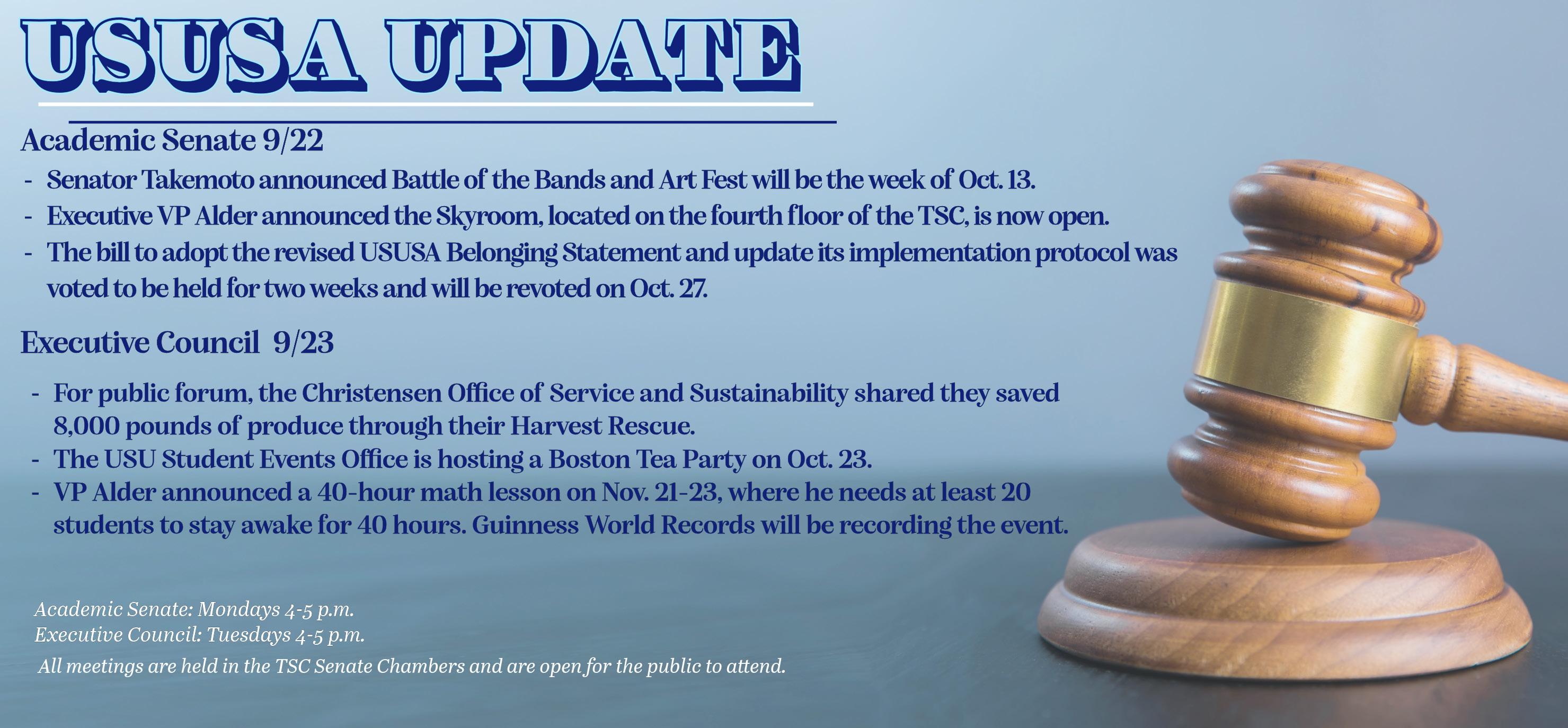
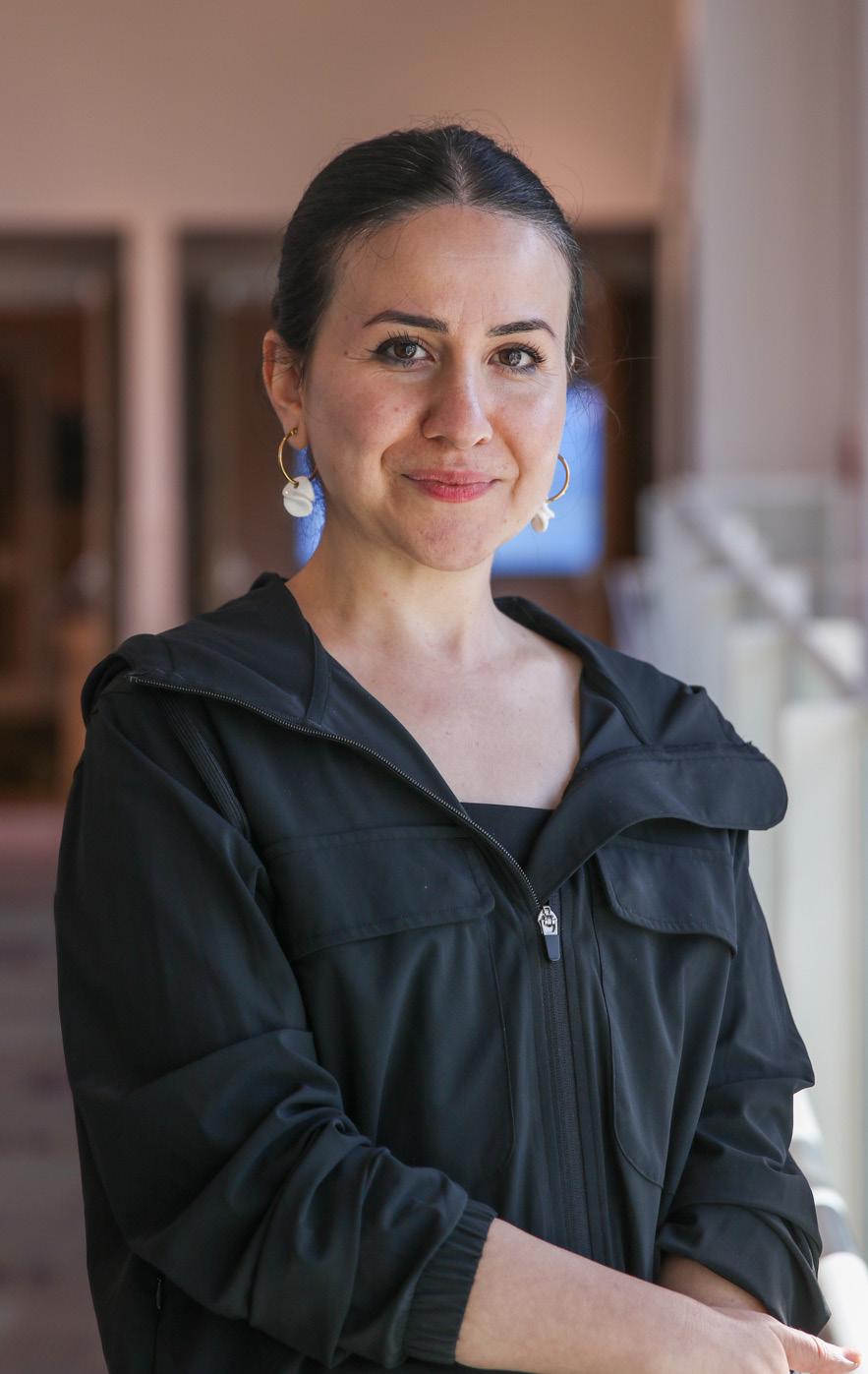
The series, a long-standing tradition at USU, will be held Oct. 15 from 3:30–4:30 p.m. in the Russell/Wanlass Performance Hall. Hosted by the honors program, this event invites one distinguished professor each year to deliver a lecture as if it were their final chance to speak to the university. This year, that honor goes to Soukhakian, an associate professor of photography in the College of Arts and Sciences.
“The whole process of students selecting the outstanding honors professor of the year for the lecture is very powerful to somebody who is a professor,” Soukhakian said. “I feel this is the ultimate award that we can receive from students, the kind of acknowledgment that we are making the impact that we were hoping for.”
Soukhakian’s lecture, titled “Not So Different After All: A Visual Story of Shared Humanity,” will explore how her experiences as an Iranian American photographer and visual storyteller have shaped the way she sees the world.
“I grew up in a country that is very conservative and has a lot of political limitations, especially for women,” Soukhakian said. “I always knew that I wanted to challenge that limitation.”
As one of the few young female photojournalists in Iran during the start of her career, Soukhakian was able to capture events with a unique perspective male photojournalists at the time didn’t consider.
“Being a photojournalist, you are in the middle of all the important events, you are active in society, and that informed my practice deeply,” Soukhakian said. “You see the difference between people’s wanting and what the regime in power is demanding.”
“Through all these photographs, I talk about how actually similar we all feel and how similar we all are despite our differences.”
For Soukhakian, art and photography are not only tools for storytelling but also bridges that connect people across borders and beliefs. She said visual expression can transcend language and culture, revealing the shared emotions that unite people everywhere.
“I have to think about how to frame my work in a way that is more understandable and inspirational to a wider crowd,” Soukhakian said. “But luckily, I think art is a very universal language and everyone can connect with art and understand art in their own ways.”
Soukhakian said she hopes her lecture will invite students to see the world and each other through a lens of understanding from their own unique perspectives.
“I’m hoping that this 40-minute lecture becomes a source of inspiration for students to challenge the limits for themselves — to tell their own unique story,” Soukhakian said.
Soukhakian said she encourages students to attend the lecture and sit next to someone they may not know in order to practice the idea of seeing one another for internal similarities rather than external differences.
“What I want to communicate to our students is that they are special,” Soukhakian said. “This is the world, it is hard, it is complicated, but we can make it by connecting together and making our story matter.”
The event is free and open to the public and will be followed by a reception in the lobby.
“The event is a great opportunity for students to mingle with other students and with faculty and staff who come from all different areas of the university and the community,” Miller said. “The Honors Last Lecture is a chance to hear from a professor who you may never have the opportunity to take a class from and to learn about their background, work and advice they would like to give for students.”
By
If a professor at Utah State University had one chance to present a lecture to the university as if it were their very last, what would it be? That’s the question this year’s student-nominated Honors Outstanding Professor Fazilat Soukhakian is preparing to answer at the upcoming 50th Annual Honors Last Lecture. “The idea behind the Honors Last Lecture is to celebrate great teaching and mentoring at USU,” said Kristine Miller, executive director of the University Honors Program. “Students typically nominate a faculty member who is an engaged teacher who can help them apply their learning in and beyond the classroom.”
Soukhakian, whose work often centers around social and political issues as a means of social change, said preparing the lecture gave her time to reflect on her unique perspective of having lived in two different countries.
“We all come from very different backgrounds, very different political views, very different landscapes, very different environments and cultures,” Soukhakian said.
“But it is so interesting that at the core of our humanity, we are all literally the same and want the same.”
Soukhakian’s last lecture will take students and staff on a visual journey through the evolution of her photography and the common ties between the stories she encountered throughout her career.
“All the stories I’m going to tell are the stories that changed me and changed my perspective as a person, as an artist and as a photographer,” Soukhakian said.

Essence Barnes is a third-year journalism student who enjoys reading, writing and storytelling.
— essence.barnes@usu.edu
By Dylan Moore STATESMAN REPORTER
Students and employees gathered around the TSC fountain on Oct. 7 for Utah State University’s annual World Mental Health Day celebration. The event featured music, massages, puppies and a steady flow of people moving from table to table in search of both relaxation and resources.
The event, held from 11 a.m. to 2 p.m., brought together multiple departments in a collaborative effort to promote mental wellness across campus. Alyssa Jensen, employee wellness manager with Human Resources, said the activities were intentionally designed to create a positive atmosphere while connecting participants with meaningful resources.
“Our goal is to share resources that are available to students and employees and help highlight the importance of taking care of our mental health with fun, engaging activities,” Jensen wrote in an email to The Utah Statesman.
The USU Employee Wellness Program, Campus Recreation and the Counseling and Prevention Services, or CAPS, offices coordinated the event as part of the university’s Aggies Thrive initiative. According to Jensen, the day’s lineup included an information and resource fair, a hope walk, chair massages, self-care kits, a drum
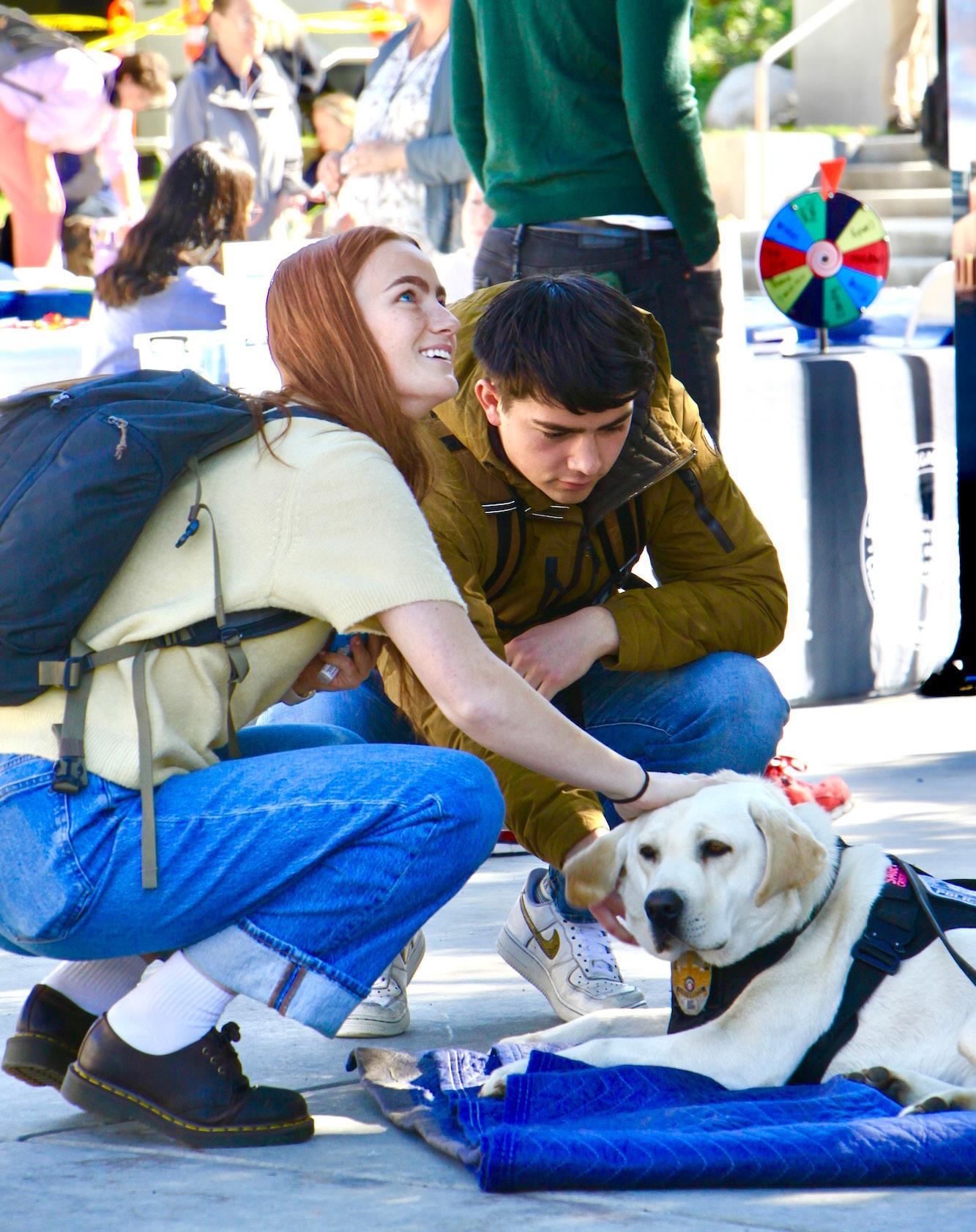
circle and a PAWS-itive impact activity with dogs from the Cache Humane Society.
“We decided that these activities would draw attention and make it easy to connect with others to start conversations around mental health and its importance, they also encourage us to take time to stop and relax and participate in activities that increase serotonin, or the feel-good hormone,” Jensen wrote.
The sound of hand drums filled the air as participants gathered in a loose circle near the fountain, playing rhythms that carried across the TSC patio.


Dylan Moore is a junior majoring in political science and minoring in anticipatory intelligence and Russian. He always loves going on outdoor adventures and cooking.
— dylan.moore@usu.edu

By Mia Nielsen STATESMAN REPORTER
Libraries around the country and Cache Valley celebrated the freedom to read and raised awareness about the harms of censorship during Banned Books Week.
“The freedom to read is a core tenet of libraries. That’s why we’re here. It’s a key tenet of democracy, to be honest,” said Michael Sauers, director of the Logan Library. “With the exception of, say, a parent to their child, nobody has the right to tell other people what they can and can’t read.”
The Logan Library and Utah State University’s MerrillCazier Library hosted events and created displays to raise awareness.
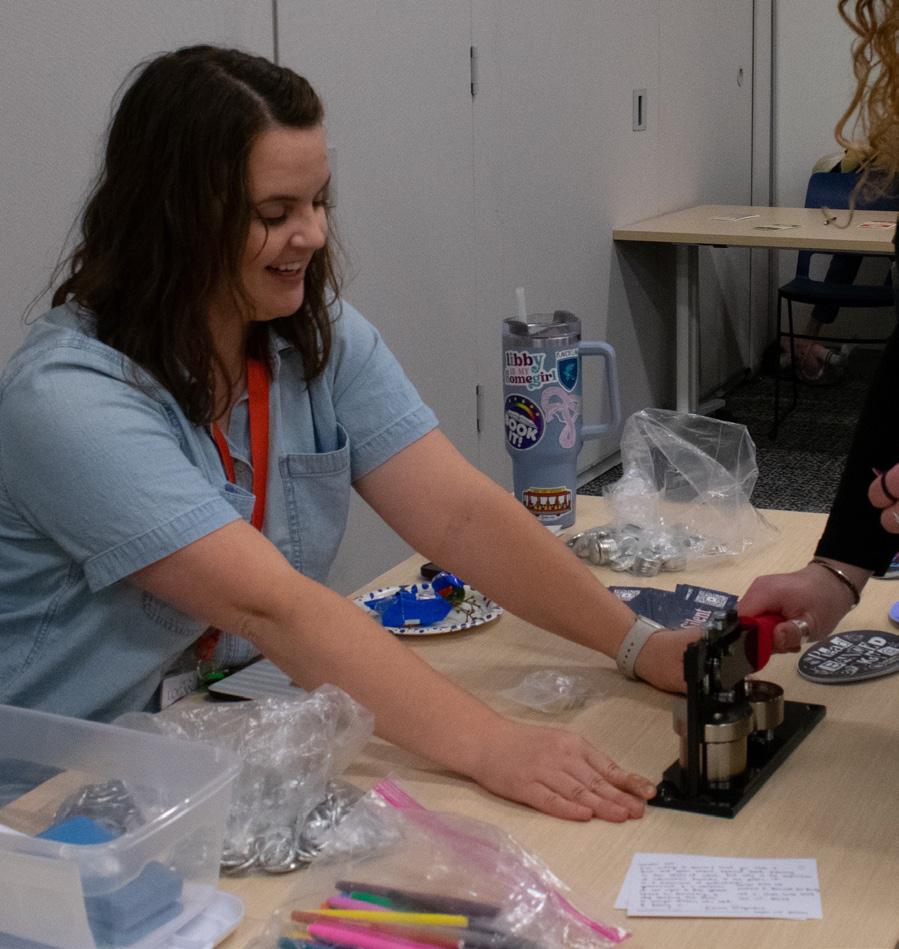
“USU Libraries participates by providing our community with information concerning the most recent data from our professional organization, the American Library Association, about book challenges. We also often do a display because we know that people are sometimes surprised to know which books have been challenged or banned,” wrote Jennifer Duncan, USU dean for libraries, in an email to The Utah Statesman.
The Logan Library hosted an activity with the Logan chapter of the Silent Book Club, where members of the community gathered to make pins and write postcards to their representatives, opposing book bans.
Roz Bingham cofounded the Logan chapter last summer. The club meets twice a month to read together without the limitations of an assigned reading list.
“You get together with a bunch of other people who want to read or maybe are just trying to find some quiet time away from kids or away from work or anything like that,” Bingham said. “It gives introverts a way to socialize without having to actually socialize.”
Bingham believes in the importance of Banned Books Week and was excited for the opportunity to collaborate with the library.
When people ban books, she said, “They’re taking something that should be a personal choice, ‘I’m not going to read these books,’ and making it into ‘No one should read these books.’”
Bingham argued people often see banned books as dangerous without fully understanding them.
“When I was younger, they had banned the ‘His Dark Materials’ series because in the last book, they killed God,” she said. “That made me want to read the book more because I was a teenager. You’re telling me ‘No, now I have to do it.’”
After reading, she felt the God figure they killed in the book didn’t line up with the God she’d learned about in church.
“It sounded more like Lucifer,” she said.
This disparity made her question the ban, which she called “stupid” and reinforced her belief that “everyone has the freedom to choose the kind of things that they want to read.”
Duncan explained this week has been around since 1982 when Judith Krug, an American librarian, noticed a “significant uptick in the number of book challenges directed toward libraries,” Duncan wrote.
At the Logan Library, Sauers is concerned about the increasing trend of book banning.
“I’ve been in libraries for 30 years,” he said. “It’s always been in the background, but it’s never really been a direct concern. In the last couple of years, there have literally been thousands of challenges to book materials.”
Years ago, while Sauers was on a library board, someone objected to the Robin William’s comedy “Patch Adams” because they felt it didn’t accurately portray how doctors worked. The board created a subcommittee, who watched the movie, wrote a report and decided to keep it in the collection.



Haylie Wood is the host of “Across the Dial,” a dynamic radio show that usually features genres like rock, K-Pop, hip-hop, country, pop, metal and more, creating a unique soundscape for every listener. Tune in Mondays at 2pm on Aggie Radio 92.3!
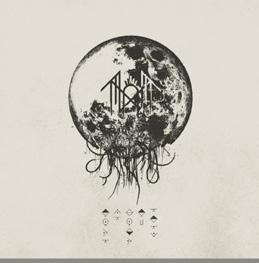
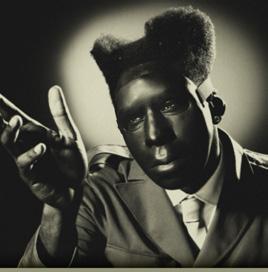


Mia Nielsen is a sophomore studying plant science and journalism. When she’s not writing, she enjoys live music, driving up Logan Canyon and daydreaming about moving to Spain.
—mia.nielsen@usu.edu

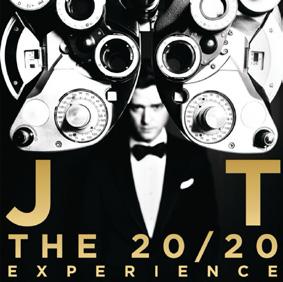


Take Me Back To Eden Sleep Token Thought I Was Dead Tyler, The Creator, ScHoolboy Q, SantiGold




By Rory McNeill STATESMAN REPORTER
Utah State University Women’s Soccer has been on a historic run of success over the past four years, winning two Mountain West championships and making two appearances in the NCAA tournament. At the forefront of this success has been senior forward Tess Werts.
Now, over a month into the 2025 soccer season, Werts has once again established herself as an offensive centerpiece for the team, leading the team in assists as well as helping lead the team on and off the field.
However, her soccer story started much before her time at USU.
“I started from a super young age. I can’t remember when I actually began, but I’ve just played soccer my whole life,” Werts said. “My guess is two or three years old, starting with just dribbling the ball across the field and doing other random exercises.”
Growing up in Portland, Oregon, Werts had many opportunities to play on teams at various levels, beginning with casual games to semi-professional leagues.
“I played regular club for the local clubs around, and then around third grade is when [Elite Clubs National
League] teams were kind of getting in development,” Werts said. “I switched over to ECNL at that time and then kind of played that throughout middle school and high school, along with being on my high school team.”
While attending Westview High School in Portland, Werts established herself as a star on her school’s soccer team as well as in track and field, where she helped her school win a state title for the 4x400m relay. Outside of school athletics, she helped her ECNL team achieve a third-place finish nationally, along with winning a Surf Cup and three conference championships.
Before her senior season, Werts moved to Draper, where she played for Corner Canyon High School and was selected to play in the Utah high school all-star game.
During the summer before her senior year, Werts committed to play for USU and head coach Manny Martins. However, her recruiting situation was rather peculiar.
“My year getting recruited was the COVID year, so a lot of teams didn’t even need people,” Werts said. “Teams told me I could walk on, but they didn’t have scholarships available. A lot of teams honestly weren’t looking for players because they had seniors coming back.”
Despite the difficulty, the new USU coaching staff saw Werts’ potential and made her a centerpiece of their first-ever recruiting class.
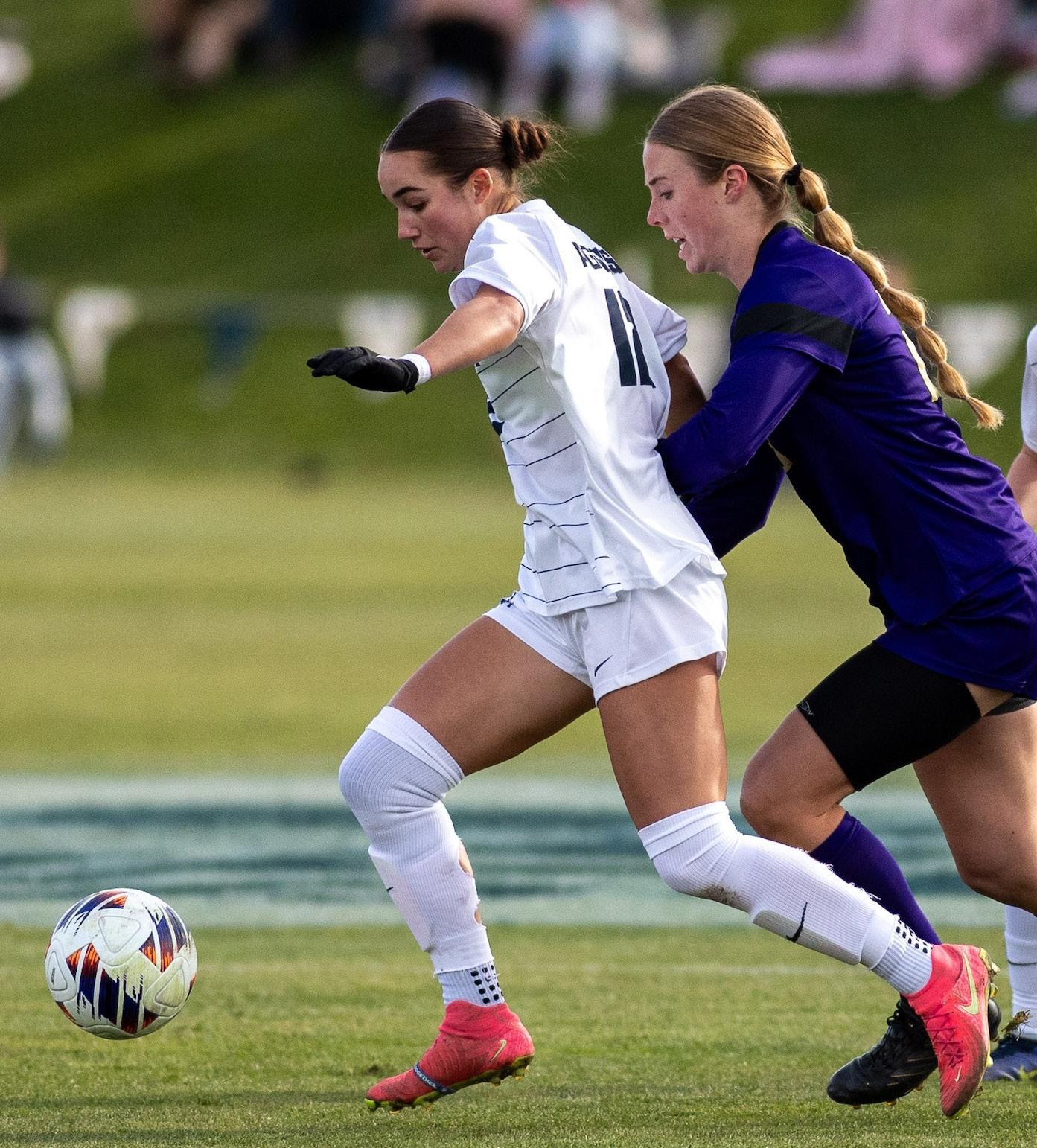
“A lot of things went into my decision to recruit her. I always like to say that we’re not looking to recruit finished products because at 18 years old, they don’t exist. It’s really projecting who has the potential to be some of the best 19-, 20- and 21-year-olds out there,” Martins said.
Martins highlighted Werts’ character, such as her integrity, hard work and ambition, as a reason behind recruiting her.
“All of that came through during our time that we were recruiting and getting to know her, so that put her at the top of the list,” Martins said. “Watching her play, I remember throughout the recruiting process, just like most kids, there were ups and downs. Some days were really great, some days — they’re a little bit more neutral, but I had seen her potential. When I saw those flashes of great moments, I knew that if we could maximize her abilities and her growth. We were going to see a lot more of that.”
According to Martins, Werts made an immediate impact upon her arrival at USU. During her freshman season, Werts played in all 21 games and started
in eight of them, tallying 23 total shots and one goal in 858 minutes played.
“When she got here, she hit the ground running,” Martins said. “It can be hard as a young player to come in and find your spot right away, but she was able to contribute from her freshman year and continue to grow with every year that she’s been here.”
Each season at USU, Werts has increased her stats across the board. As a sophomore, she started 20 of the team’s games, finishing No. 1 on the team with 38 total shots, No. 2 with four assists and No. 3 with three goals. As a junior, she started 21 of the 22 matches she appeared in, finishing No. 1 on the team in goals with eight, assists with nine and points with 25. She finished the season ranked No. 2 in points in the Mountain West Conference, No. 3 in goals and No. 1 in assists.
Despite her talents growing exponentially as a player, many of her teammates highlighted how much she has grown as a teammate and leader.
“She’s the voice for a lot of our teammates here, and I think she’s someone that our teammates feel comfortable going up to if they have problems or if they just need help or need a friend,” said fellow senior Kaylie Chambers. “She’s a great connector between our team and the coaches, and she’s also not afraid to speak her mind if she needs something from the team. If she wants to demand more, she can — she has the confidence to do that. That’s why she’s a great leader and a great teammate.”
The coaching staff has also noticed her emergence as a leader for the team.
“The nature of it is players, especially younger players, will look up to someone who’s a high performer. She’s someone who has really grown a lot in the time that she’s been here, and she has the ability to connect with players and carry a message on in a way that doesn’t necessarily scare people,” Martins said. “You know, sometimes leadership can come across as stern to a point where people maybe can be put off by it. That’s not the case at all. I mean, if you pay attention, she’s one that is always smiling, and there’s always something fun when she’s around.”

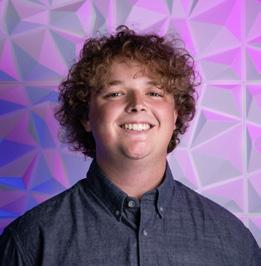
Rory McNeill is a sophomore from Rocklin, California studying mechanical engineering. He loves Aggie sports, skiing, golf and writing music.
By Alici Archibald STATESMAN REPORTER
As Utah State University’s Rodeo Club wraps up its fall season, they’re looking back at both the good times and the hard times and how the sport has helped them grow.
“The sport of rodeo — it just teaches you so much,” adviser Colton Bair said. “They’re learning life lessons because it is such a roller coaster and there’s a lot of ups and downs.”
USU competes in the Rocky Mountain region, which includes southern Idaho, Utah and western Colorado. They play as part of the National Intercollegiate Rodeo Association, or the NIRA. They have a total of 32 athletes, including two from Blanding’s campus.
Bair said this is the biggest team USU has had since he got involved in coaching. He said his favorite part is watching them grow into adults.
“I really enjoy getting to interact with these students. It’s such a fun age that they’re at,” he said. “There’s a lot of growth that happens in college, and I feel like we can hopefully help them during this period.”
Many of these athletes get involved because of their relationship to the culture and to their animals.
Bethany Haynie is a barrel racer who got involved with rodeo because she loves riding horses.
“I’m in love with animals and just the feeling you get when you’re here,” she said.
Haynie is a first-year student, but she’s been in rodeo all throughout high school. She said she loves the opportunities and growth USU has brought her.
“This season has been a big learning curve for me — just getting adjusted into college rodeo,” Haynie said. “I’m looking forward, just applying myself to the things
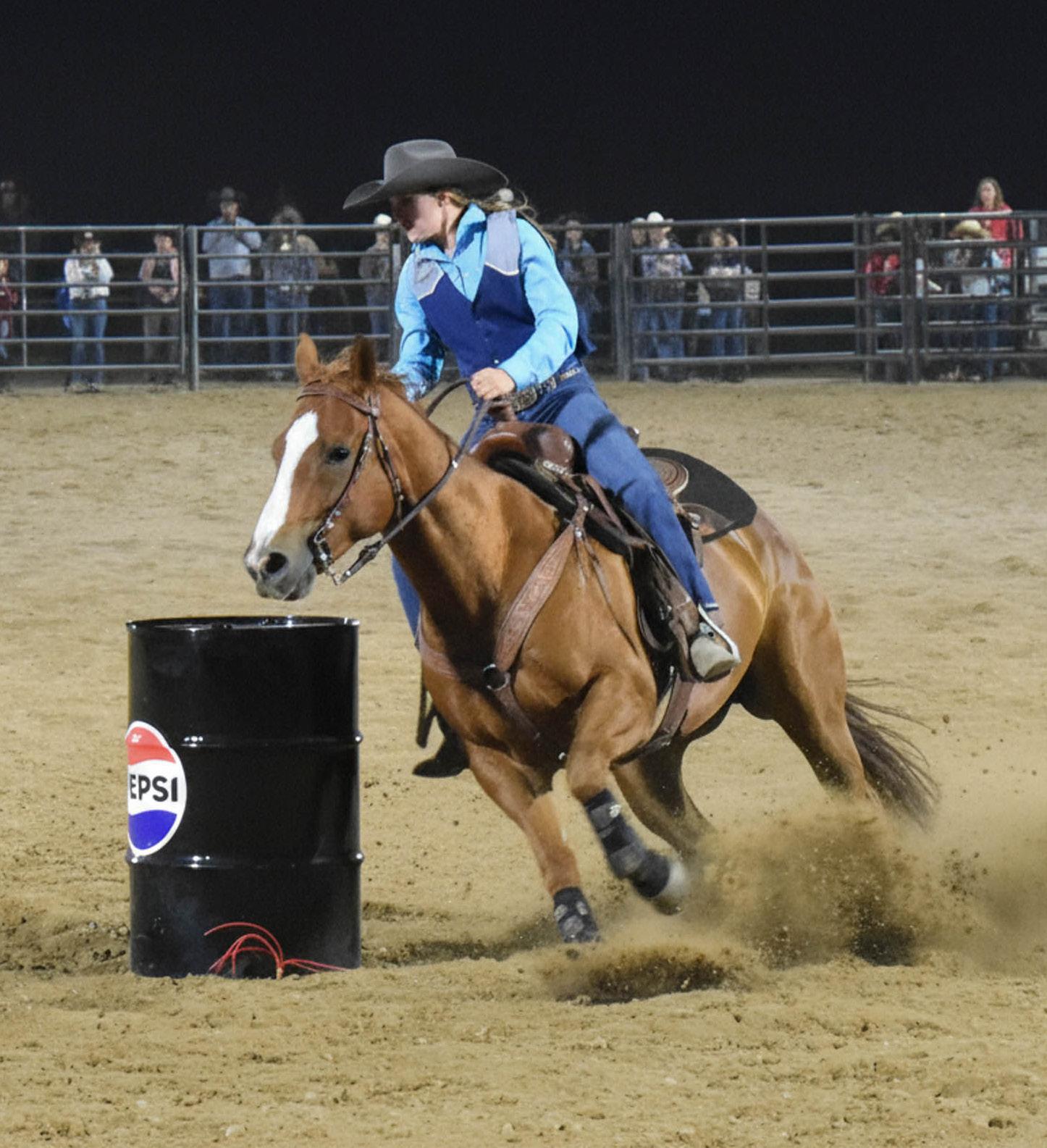
I’ve learned this season and just trying to get better.” Sophomore Ashley Bartschi also started in rodeo because of her love of horses. She had been riding her entire life but didn’t get involved in rodeo until high school, when her friend started teaching her.
“I instantly just found that ‘barrel bug,’ is what we call it,” Bartschi said. “It’s just kind of like an addiction, just a bond you have with your horses that you won’t find anywhere else in any other sport.”
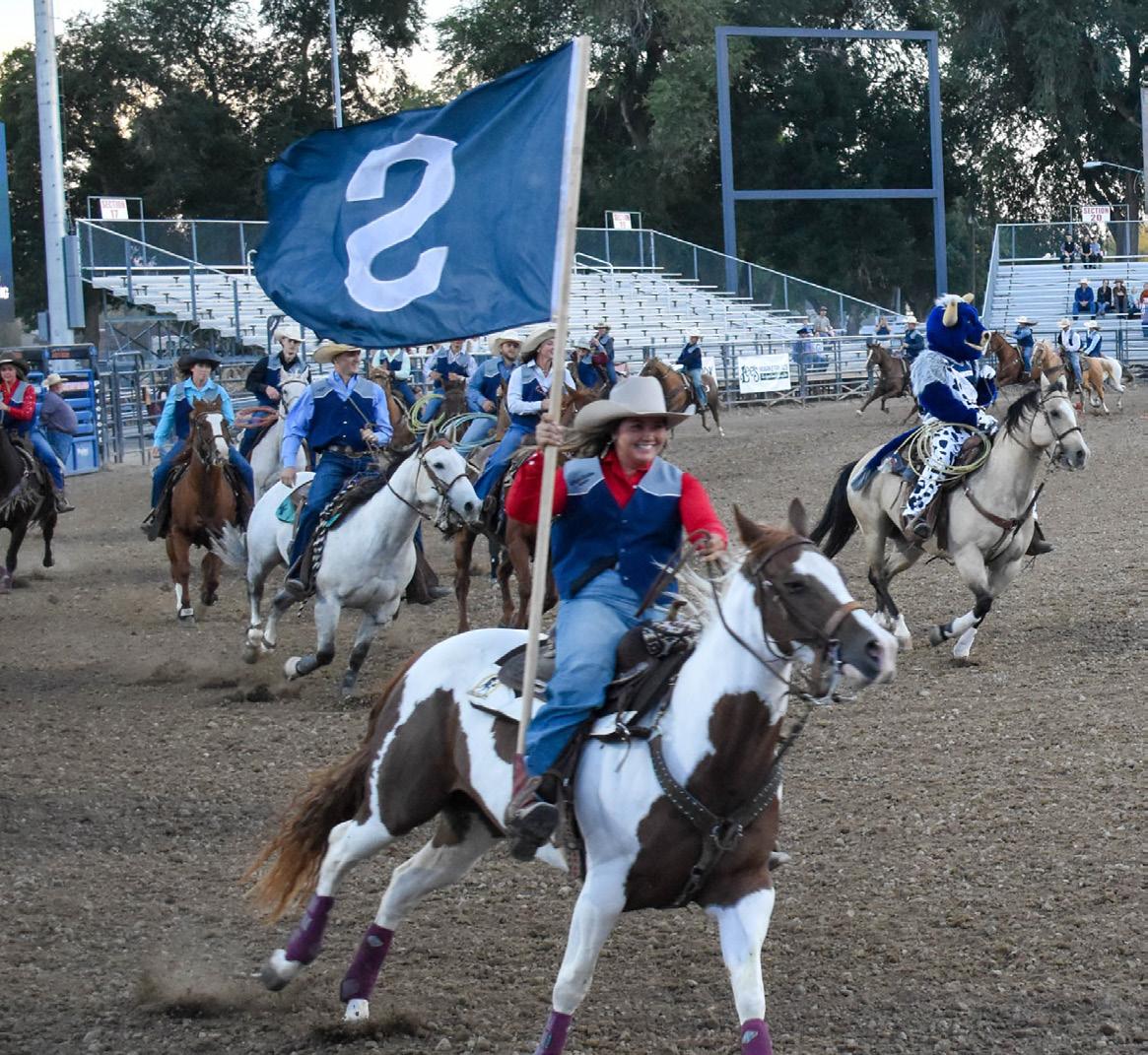
Dalaynie Brown is a first-year student who has been barrel racing since first grade. Even though she’s grown up with the sport, she agrees the thing that keeps her connected with it is her horse.
“My favorite thing is the community and how much you grow a bond with your horse and how special that is,” Brown said. “That’s something I will forever be grateful for.”
Brown said her horse Phil has a very special story. He’s named after the Book of Philippians in the Bible.
“He actually wasn’t supposed to make it at birth, so it has a special meaning, and I’m very thankful for him,” Brown said.
Rodeo is a unique sport because in addition to the health of athletes, the health of the horses need to be considered. The students encountered several horse injuries this season, but the team has dealt with the situation well, according to Bair.
“Our student-athletes, the ones that we need to step up, they’re stepping up,” Bair said.
Bartschi has been dealing with horse injuries as she competes in barrel racing and breakaway roping, but she said she is glad it has taught her so much.
“It’s made me super grateful for the small things and the fact that we’re on a team. I can still somewhat be in the rodeo atmosphere being able to help,” Bartschi said.
Rodeo is a mix of team and individual competition. Each team submits 10 athletes for scoring, and each athlete competes individually for their event. Bartschi said her favorite part of college rodeo is the team aspect, as other levels of the sport don’t have teams.
“We all practice together, we compete together, we travel together, we do everything together,” she said. “We’re just like one big family.” Bair said he loves to see his athletes progress and become better.
“That’s the great thing about the sport of rodeo, is that everybody’s cheering for everybody,” he said. “You’re just competing against yourself.” As of Sept. 30, the club sits at No. 4 in the region for its women’s team and No. 8 for its men’s team. Leading in barrel racing for the majority of the season, CJ Cox is now No. 2 in the region, just trailing behind USU Eastern athlete Saydee Davis. Brecken Smith is tied for No. 7 in that same category and tied at No. 4 for breakaway roping. In the men’s category, Payt Goodey is No. 5 for team roping heeler. Bair said the thing that motivates the team is their love and passion for the sport.
“We just try to tell them, remind them, we’re doing this because we love it,” Bair said. “We love horses, we love the animals and we love the Western heritage.”

Alici Archibald is a senior studying broadcast journalism. In addition to playing the piano or cheering at sporting events, she can be found on campus with a huge camera.
— a.archibald@usu.edu
By Emma Shelite STATESMAN REPORTER
Utah State Men’s Basketball coach Jerrod Calhoun told students resilience and adaptability start with everyday habits, not highlight-reel moments, during a campus leadership workshop on Oct. 2.
The Stephen R. Covey Leadership Center hosted Calhoun for the Learning Staircase Series in the Carolyn & Kem Gardner Learning & Leadership Building. The session, advertised as an Adaptability Workshop, drew students for an hourlong conversation on routines, communication and leading through change.
“Jerrod Calhoun pledged $150,000 of his own money to support Utah State players. That’s how much he believes in this program,” said Bret Crane, executive director of the center. “With him, it isn’t just about adaptability. It’s about people — meeting people with vision and motivation.”
Calhoun’s message keyed into simple, repeatable behaviors.
“I think it’s routine. When I’m out of routine, I’m out of whack,” Calhoun said, explaining sleep, exercise and preparation determine how he shows up for practice and games. He encouraged students to “master the day” by planning what they want to accomplish and sticking to a consistent personal cadence.
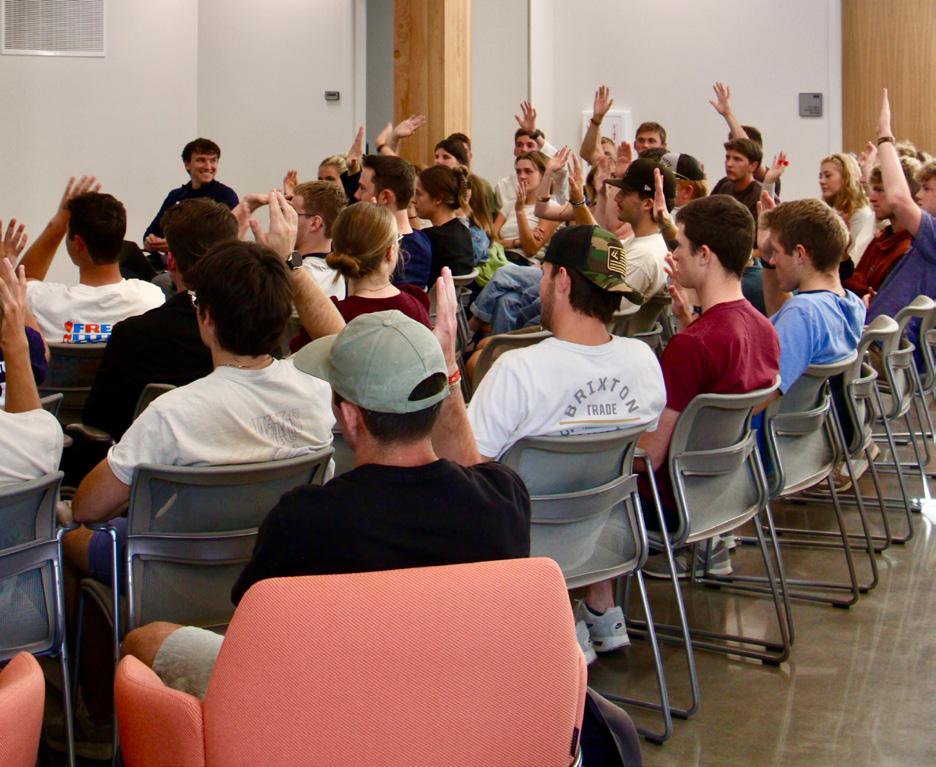
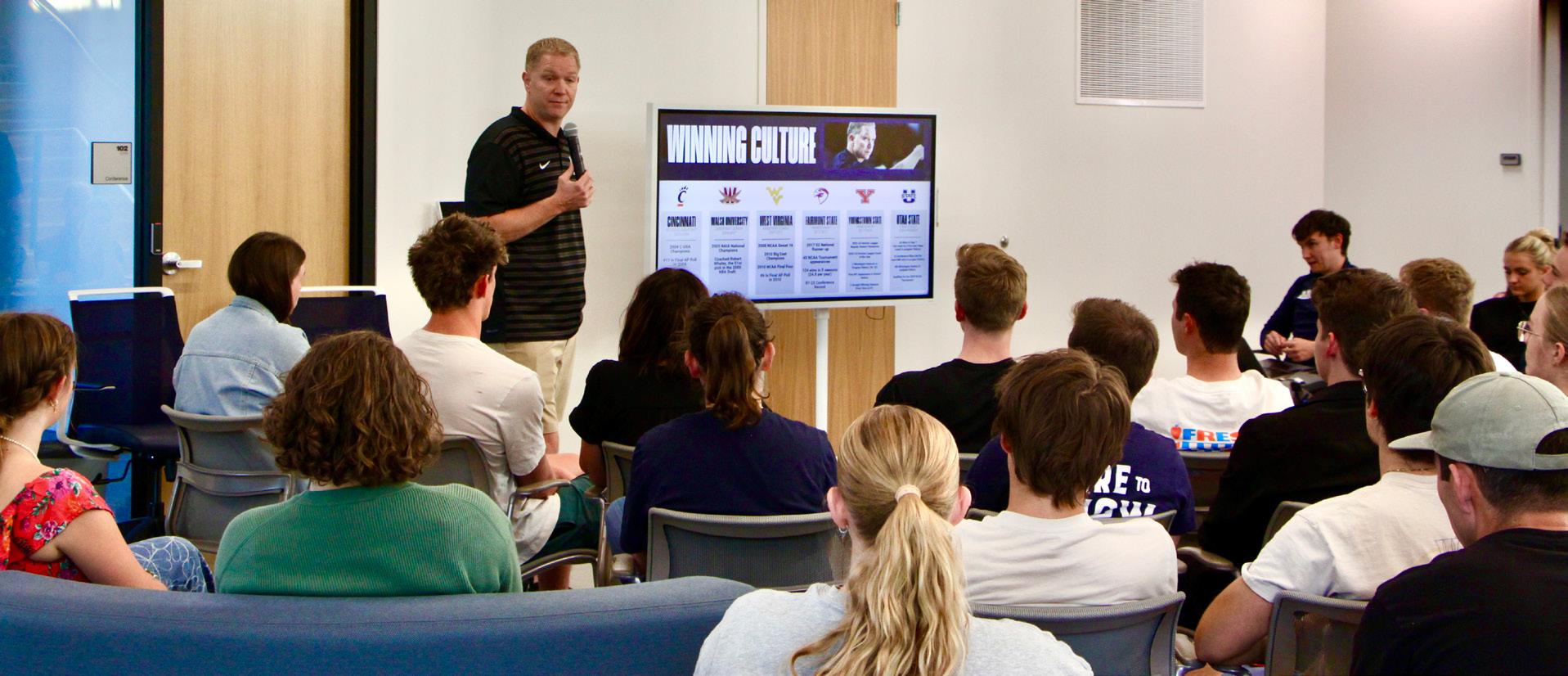
“How do you train your players to be adaptable in a game, but then also, how do you train them to be adaptable in their daily lives?” an audience member asked.
Calhoun emphasized clarity and accountability shape culture.
“You have to be honest with people. You have to be direct. That begins with basic team standards: being on time, speaking up and holding one another to what was agreed upon. Coaches model the same behavior they expect from players,” Calhoun said.
Calhoun also addressed setbacks and how teams respond when things go wrong.
“Adaptable groups don’t dwell on problems. They diagnose, plan and move forward together. That process matters just as much at a Tuesday practice as it does with the game on the line,” he said.
Routines help stabilize emotions after losses and keep success from breeding complacency after wins. Calhoun said consistency in the locker room is important.
“From the perspective of working in sports, how did you best leverage your opportunities as an assistant into coaching positions and beyond?” an audience member asked.
often a teammate who consistently does the right thing when no one is watching.
When asked what his own routine looks like in-season, Calhoun said it’s built around movement and planning.
“You got to get at least 45 minutes of exercise. Trying to be balanced, trying to read, trying to walk today for 15 minutes before practice. But I would say the first thing that you should do is tell yourself that you’re going to have a great day,” Calhoun said.
Calhoun said to define what success looks like, establish daily processes and communicate directly.
“Have your beliefs, have your values,” Calhoun said. “If you’re clear about those, you’ll be okay.”
The center plans to continue inviting campus leaders to speak on adaptability, integrity and communication in future sessions, according to Braylen Carlson, head of leadership experience at the center.
Calhoun’s bottom line for the room was simple: Routines build resilience. Whether it’s a pregame walkthrough or a midweek class project, Calhoun said, the standard stays the same.
Audience questions ranged from in-game adjustments to off-court growth.
“How do you keep your mindset and your team’s mindset the same when you’re playing a small game versus a team like UCLA?” an audience member asked.
“I think it starts and ends with your best player,” Calhoun said. “If your best player sets the example every day, it’s more powerful than the coach.” Calhoun emphasized standards don’t change with the opponent. The focus is preparation, trust and poise.
“Say yes to uncomfortable jobs, staying curious and learning across programs with different resources and expectations. Do the small things well: organize the day, preparing and communicating clearly with players and staff. Those habits traveled with me from one stop to the next,” Calhoun said.
Throughout the discussion, Calhoun returned to the relationship between leadership and followership. Coaches set standards, Calhoun said, but player-led teams are the ones that last through adversity.
“Leadership is about getting others to follow,” Calhoun told the crowd, adding the most persuasive example is
“When your best people set the tone and everyone owns their role, you give yourself a chance in every situation,” Calhoun said.
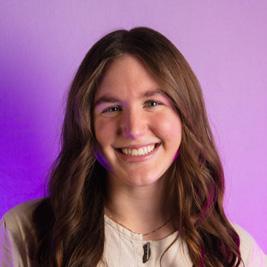
Emma Shelite is a senior pursuing a bachelor’s degree in communications and journalism. Her writing is fueled by Dr Pepper and an extroverted personality. She is passionate about cooking and athletics.
By Emi Ludlow STATESMAN REPORTER
The new Utah State University Bowling Club that started this year began not at the alley but in club President Cooper Jackson’s house.
“I love this story,” said Tucker Farris, club vice president. “We were sitting, and [Jackson] loved bowling, and I’ve always loved bowling too,” Farris said. “He was like, ‘Did you know there’s no bowling club?’ and I [said], ‘No,’ and he’s like, ‘I want to start one.’ I [said], ‘Let’s do it.’”
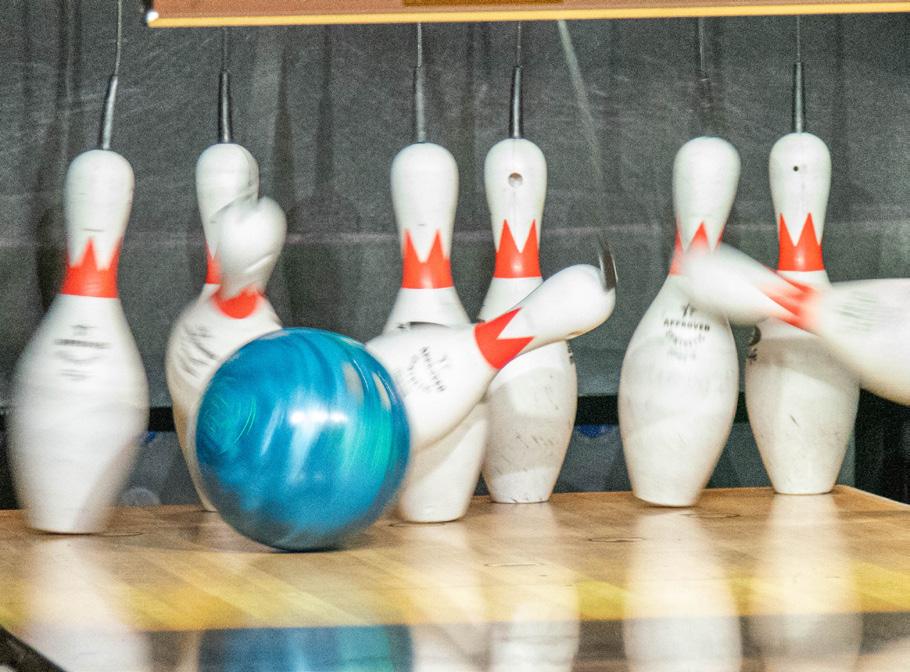
Since then, the club has met every Monday from 8:30–10:30 p.m. at Logan Lanes. It has been going for five weeks with up to dozens coming to participate.
“We’ve been getting an average of 50 people per time. They typically show up late, but we get around 50 every week,” Farris said.
There are regulars, but each week, the numbers fluctuate. Most people come in after the first 30 minutes of the club’s reserved lane time.
“It’s casual because we want everybody to come and everyone to feel welcome,” said Brooklyn Davis, club secretary. “If you’re not good, that’s fine. Just come and have fun. Bring your friends, hang out and meet new people. I’ve met so many people just this semester from it.”
According to Jackson, his passion for bowling is what gave him the idea to start the club.
“I work here at the bowling alley — it’s really fun. I just started the USU class, and then I was like, ‘This is really fun,’” Jackson said.
In order to prevent conflict with other activities, Jackson chose Monday nights for more participation. “I was worried about SK80’s [Night at the Fun Park]. I didn’t want to do anything on that event. And then also there’s league nights here, so we had to move around that,” Jackson said. “Monday seemed to be the best day that could work for everybody.”
The main form of communication for the club is a GroupMe chat for the regular participants. For advertising, there is an Instagram account @usu_ bowling run by the vice president and secretary.
“I do social media marketing. Every night, we make an Instagram reel, and it’s an edit of everybody having a good time. We [use] trending sounds, but for the most part, it is showing how much fun it is,” Farris said. “And then we do have a GroupMe for the people that do want to be getting updates.”
If you’re not good, that’s fine. Just come and have fun. Bring your friends, hang out and meet new people.
— Brooklyn Davis
Davis walks around throughout the night taking pictures and videos to promote the club visually. It started when she got a camera over a year ago and has been bringing it around taking pictures for the club and for SK80’s at the Cache Valley Fun Park on Tuesday nights.
“I like taking pictures and videos,” Davis said. “I’m really good friends with Cooper and Tucker, and they asked me, ‘Do you want to do videos for the bowling club?’ and I said, ‘Yeah.’”
So far, the club has gone to Day on the Quad but have plans to keep reaching out and advertising their club.
“We’re making flyers and going [to] be in the homecoming parade with a float. It’ll be fun,” Davis said.

Emi Ludlow is a first-year student majoring in English hoping to go into the journalism field. She has been involved in journalism for four years now, and her favorite part is telling people’s personal stories.
— a02474473@aggies.usu.edu
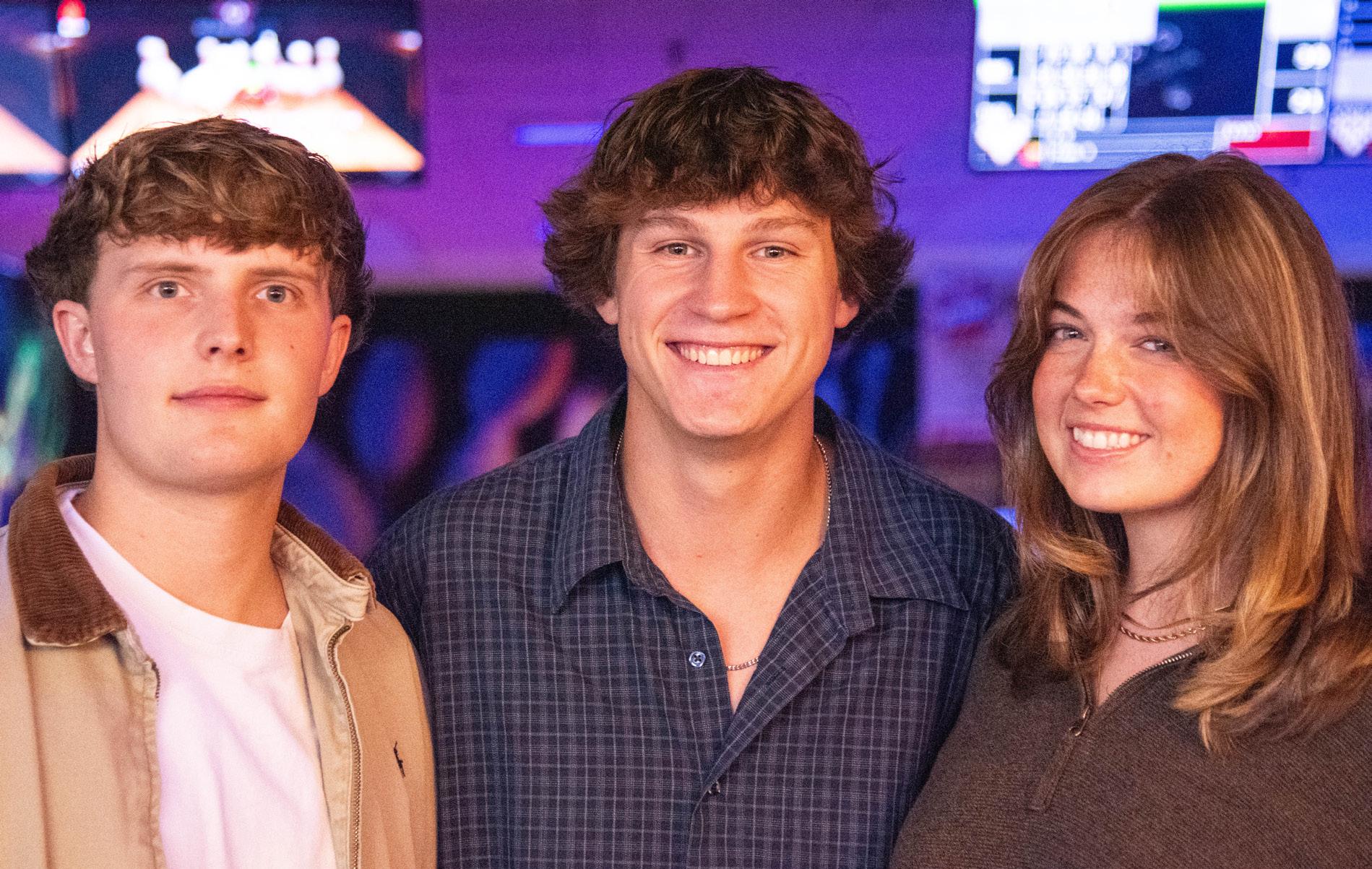
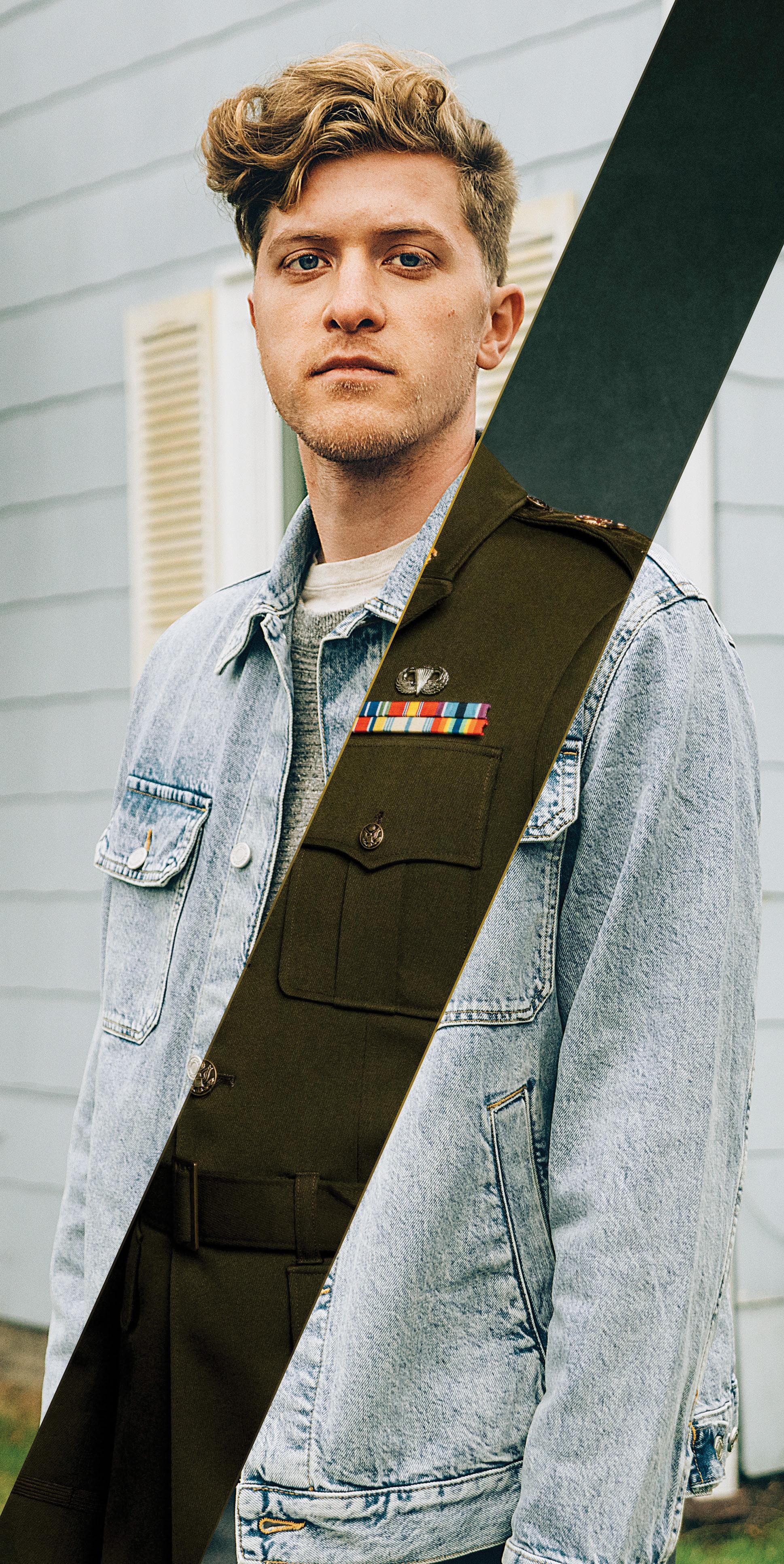
By Sam Isaacson
*Editor’s note: This guest submission was written for a USU class and was not edited or altered by The Utah Statesman.
On Tuesday Sept. 2, the 30% design plan for the Canyon Road Improvement Plan was presented to the Logan Municipal Council at their biweekly meeting.
Mike Johnson, a municipal council member, said the improvement plan is part of the 1st Dam Tank & Waterline, which will help fix the issues Logan City has with water storage and delivery.
“The state has requirements of how much water we have to have on hand, and currently we’re roughly four million gallons shy,” Johnson said. “This project will bring us up to state standards and help us in terms of drinking water supply for the citizens, fire flow, emergency preparedness, and overall system functionality.”
The 10-million gallon water tank is going to be installed near Riverside on USU’s former ropes course property. Mark Anderson, a municipal council member, said once the location had been decided they found Canyon Road would be the best location for the waterline.
“It had been identified that Canyon Road was probably the location where it needed to be,” Mark Anderson said. “It was going to impact the fewest residents and be the least expensive for the city.”
The improvement plan will go from 600 E up to 1500 E just past Herm’s Inn on Canyon Road, and will feature a 66 foot right of way. Zan Murray, project manager for the improvement plan, said they decided to go with this right of way design for the residents’ benefit.
“The city wants to maximize the benefit and lower the impact to citizens in the area by creating an efficient 66 foot right of way which really focuses on the needs the master and neighborhood plan documents have outlined,” Murray said. “It allows us to get the most benefit with the least impact to residents.”
The improvement plan will implement narrower travel lanes, four foot shoulders on each side of the road, wider park strips, curbs and gutters, new trees, and an eight foot sidewalk on the north side of the road.
Leila Shultz, a Professor Emerita in Wildland Resources at USU, said Canyon
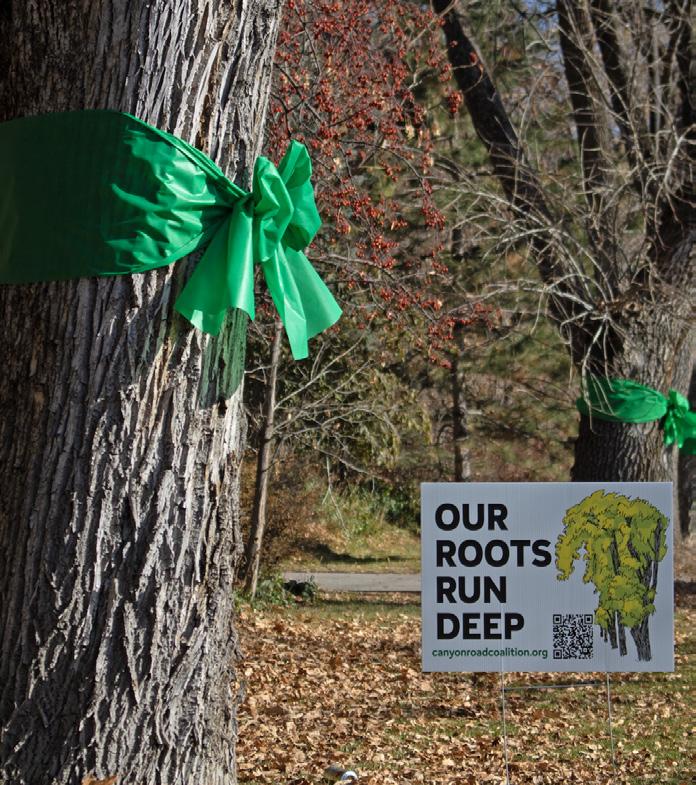
Road doesn’t need a new sidewalk on the north side of the street.
“We in the neighborhood always felt the south sidewalk is the best solution,” Shultz said. “It’s what people will use naturally, there’s really almost no traffic on the north side, and would only serve a few homes. I don’t think we need a private sidewalk that costs a couple of million dollars, but the city says we do.”
Murray said the plan will meet future needs for transportation and traffic, along with improving bicycle mobility and providing safe pedestrian movement. Murray also said it will help create a uniform streetscape to match the neighborhood feel and fit into what the community and neighborhood want to see.
Shultz said she believes there are other alternative options to deal with the expected traffic increase along the road.
“Frankly, I think it would be safer to keep pedestrian traffic on the south side with the plan to connect it to the pathway up behind the canal,” Shultz said. “There’s a good canal pathway which goes through Memorial Park. Why in the world would you even put a sidewalk on the north side when there’s an underutilized sidewalk on the south side?

By Max Murray AGGIE RADIO
On Sept. 29, the Ellen Eccles Theatre hosted one of the most unlikely rock shows Logan has seen: a fusion of bagpipes, kilts and rock anthems that all somehow worked. The Red Hot Chilli Pipers — yes, Pipers — brought their signature “bagrock” sound to a nearly sold-out crowd that could best be described as your mom and dad’s perfect date night. The audience was filled with middle-aged couples, grandparents and the occasional kid dragged along for “family culture night.”
The band, made up of Scottish rockers dressed head to toe in matching black jumpsuits and kilts, looked like Green Day goes Scottish. Long red socks, black and white Converse and bright red pouches, traditionally called a sporran, completed the look. The stage itself was simple: a traditional drum kit, guitars, bagpipes and a standing drummer who twirled his mallets dramatically between beats like a marching band showman. It was funny and over the top but never boring. Before this show, I would’ve imagined bagpipes in a band to be like banana in a smoothie — “I added in all these other ingredients. Why do I only taste banana?” However, I was pleasantly surprised to find the Pipers balanced the bagpipes fairly well with the rest of the instruments. The bagpipes were the melodic core of the performance, carrying a drone-style synth sound throughout songs and even replacing guitar solos entirely in some instances.

“They’ve had enough of our money, haven’t they?” Judge said, earning a mix of laughter and approving cheers from the crowd.
The Pipers played a variety of covers including songs from Stevie Wonder, Journey and Avicii. Most covers turned familiar favorites into something new — some songs were actually unrecognizable until the chorus came in, showing the band was more about reimagining songs than covering them.
Three songs in, there had still been no vocals, as everything was purely instrumental up to that point. That is, until the singer strutted on stage in a shiny, sparkly red shirt that could’ve doubled as a disco ball. The singer Chris Judge was notably impressive and received multiple ovations throughout the night. Between songs, he cracked family-friendly jokes and got the crowd involved, showing off the kind of stage presence usually found on cruise ships.
Judge also took a jab at the mainstream music industry, announcing their upcoming album would not be available on streaming platforms.
For an Eccles show, the audience was surprisingly active or at least trying to be. While it felt odd for everyone to stay seated during a rock concert, the Pipers encouraged sing-alongs, clapping and swaying, which people did with varying enthusiasm. One especially funny moment came when the band asked everyone to pull out their phone lights for a slow song. Within seconds, the theater transformed into a sea of home screens — dogs, grandchildren and family selfies shining brightly toward the audience as people struggled to figure out how to turn on their flashlights.
At one point, the band’s lead bagpiper caught his breath between songs and laughed, saying, “I absolutely love being in Utah — your mountains, views, all gorgeous... I will say... I definitely am feeling the difference of being so above sea level.” The crowd laughed, and the line only added to the sense that the group was genuinely enjoying themselves as much as the audience was.
The musical highlight came just before intermission, when the guitarist launched into a Jimi Hendrix-style
rendition of “The Star Spangled Banner,” complete with a patriotic bagpipe harmony that led straight into AC/DC’s “For Those About to Rock.” The majority of audience members stood with hands over their hearts, unsure whether to salute or rock out. It was funny, different and wholesome — a good overall snapshot of what the Red Hot Chilli Pipers are all about.
Despite the constant energy early on, the novelty of the bagpipes did begin to wear off after intermission. Even the band seemed aware of it, giving the pipes breaks so the guitars and drums could carry a few songs alone. The shift in sound was refreshing and reminded everyone just how musically skilled the rest of the performers were. The guitarist, in particular, stole several moments throughout the night with solos that would make any classic rock fan proud.
When the final bag was piped and the crowd rose for a standing ovation, it was clear the Red Hot Chilli Pipers had done something special by making bagpipes cool, if only for a night. Bagpipe-led rock music may sound like a gimmick, but surprisingly, the execution tells another story. The Pipers bring humor, talent and pure showmanship to the stage, turning what could be a bit into a genuinely impressive concert experience.
The night was ultimately a celebration of music as opposed to just bagpipes. Judging by the smiles, claps and glowing home screens, the Red Hot Chilli Pipers turned Logan’s quiet Monday night into something loud, proud and memorable.

Max Murray is a communication studies major and the general manager of Aggie Radio 92.3 FM. He can be found dabbling in all things creative and whimsical. — maxwell.murray@usu.edu

